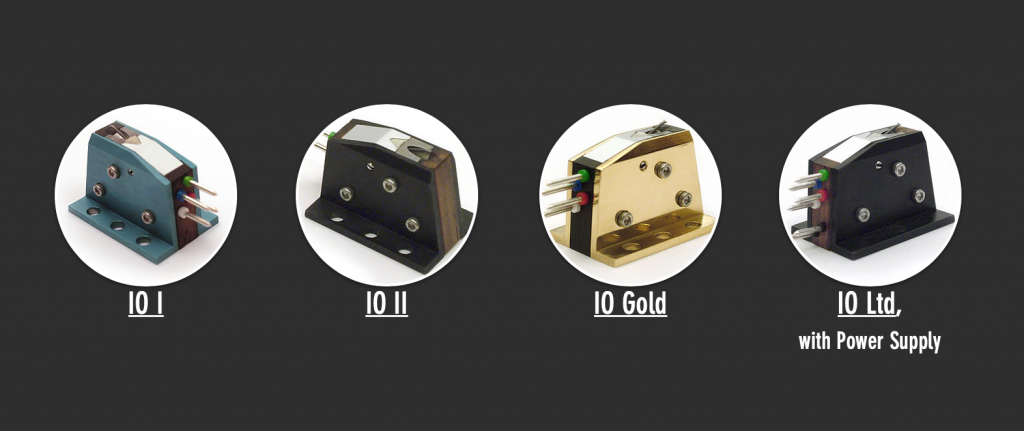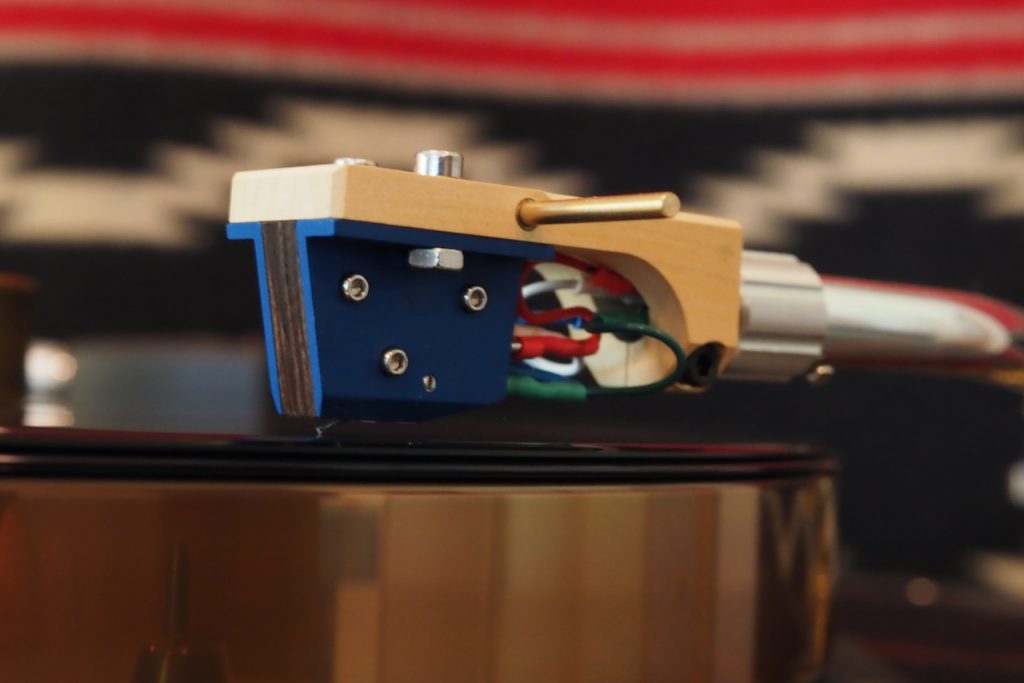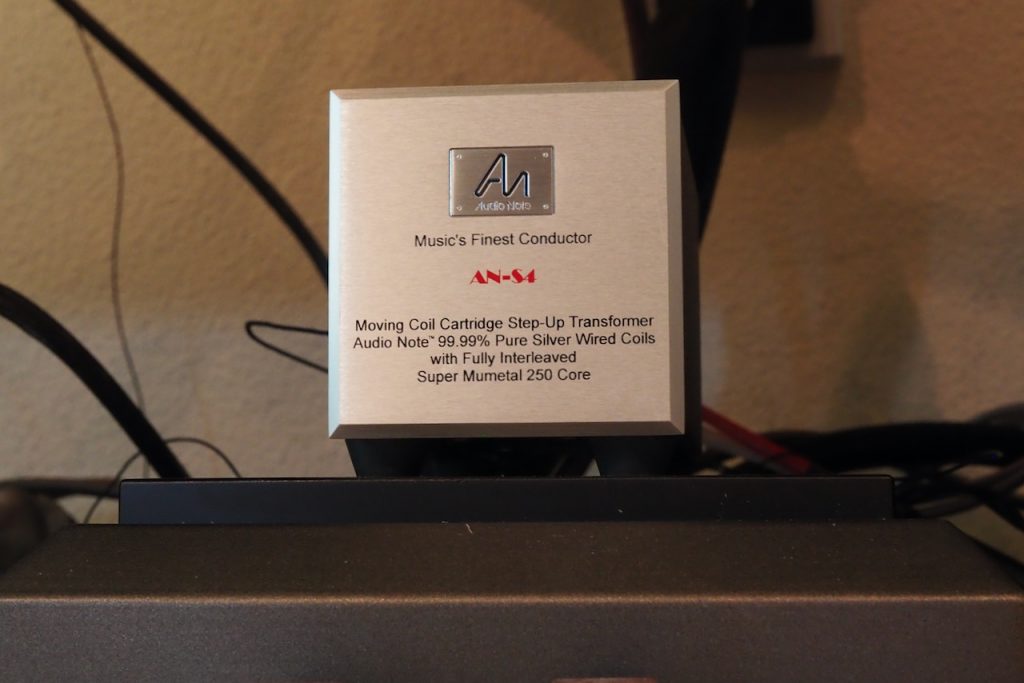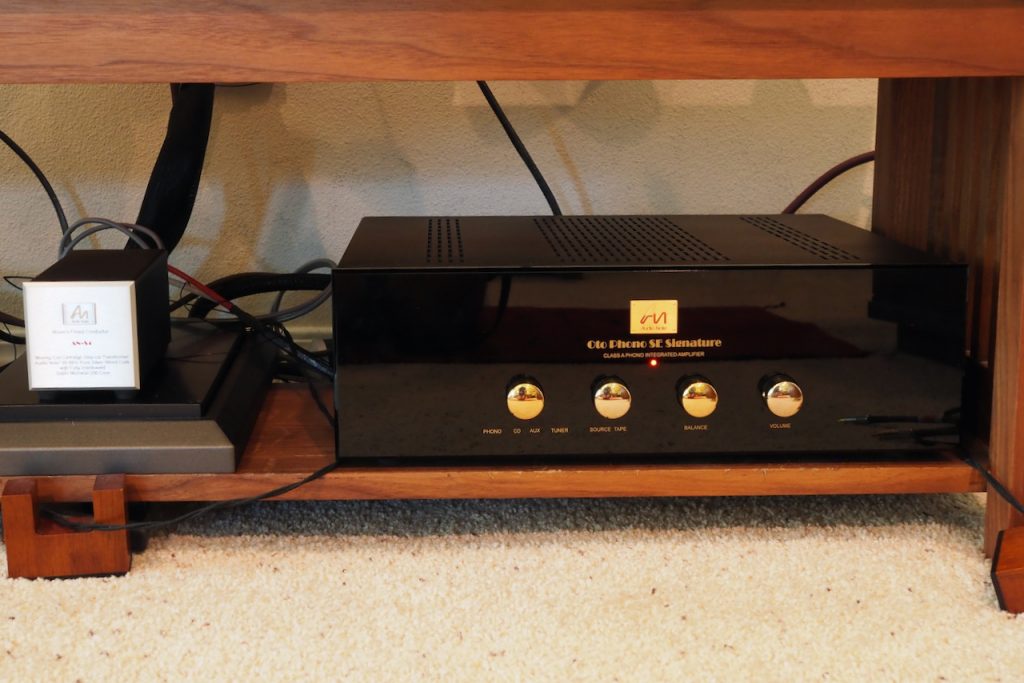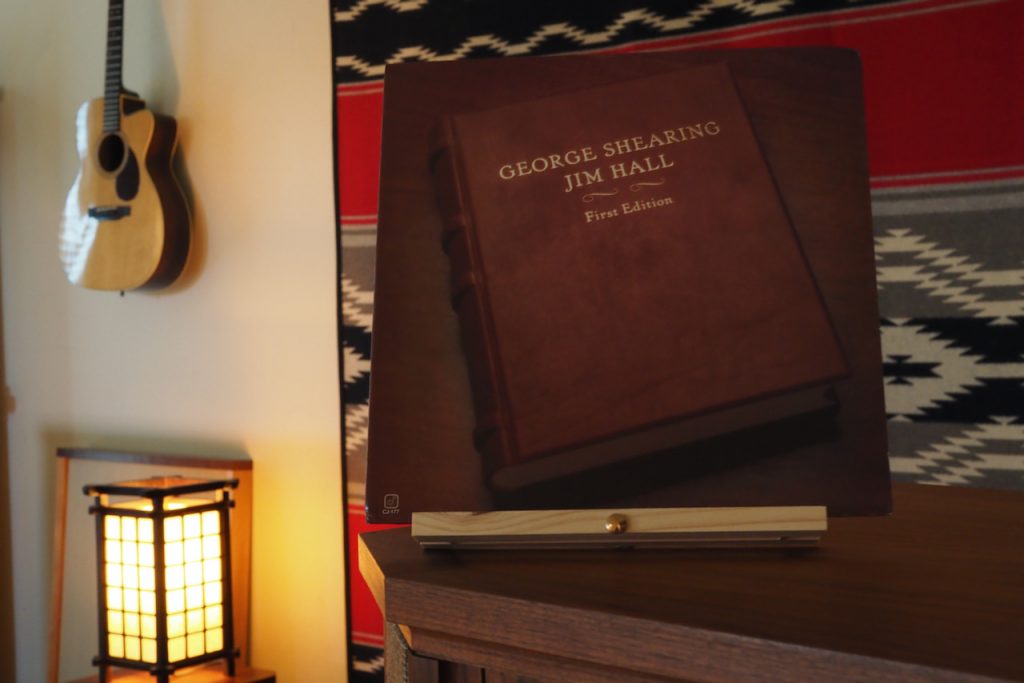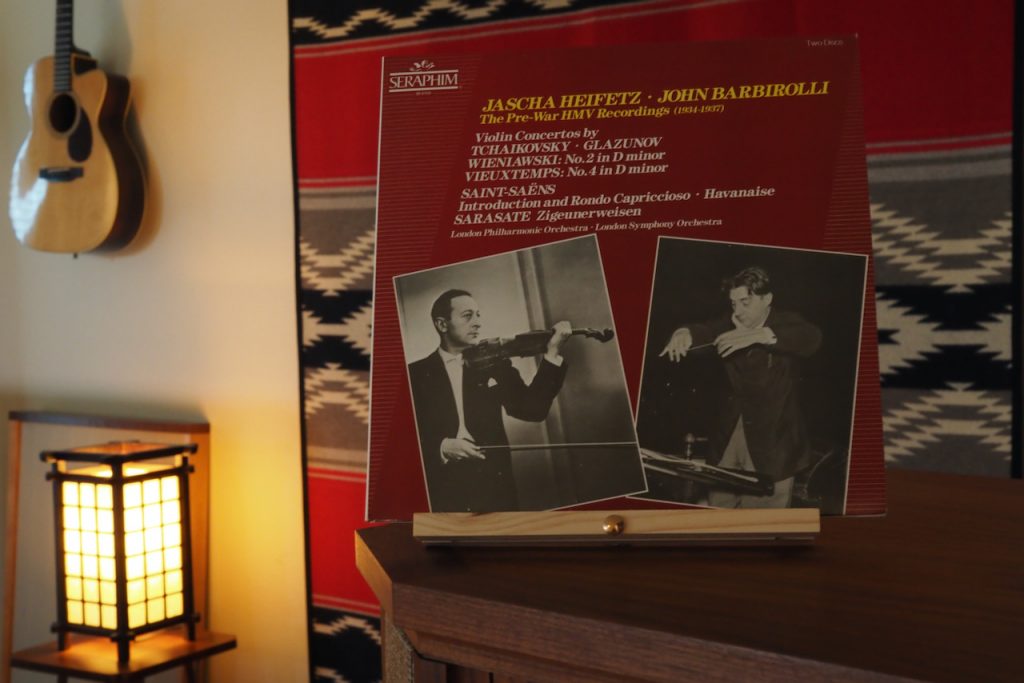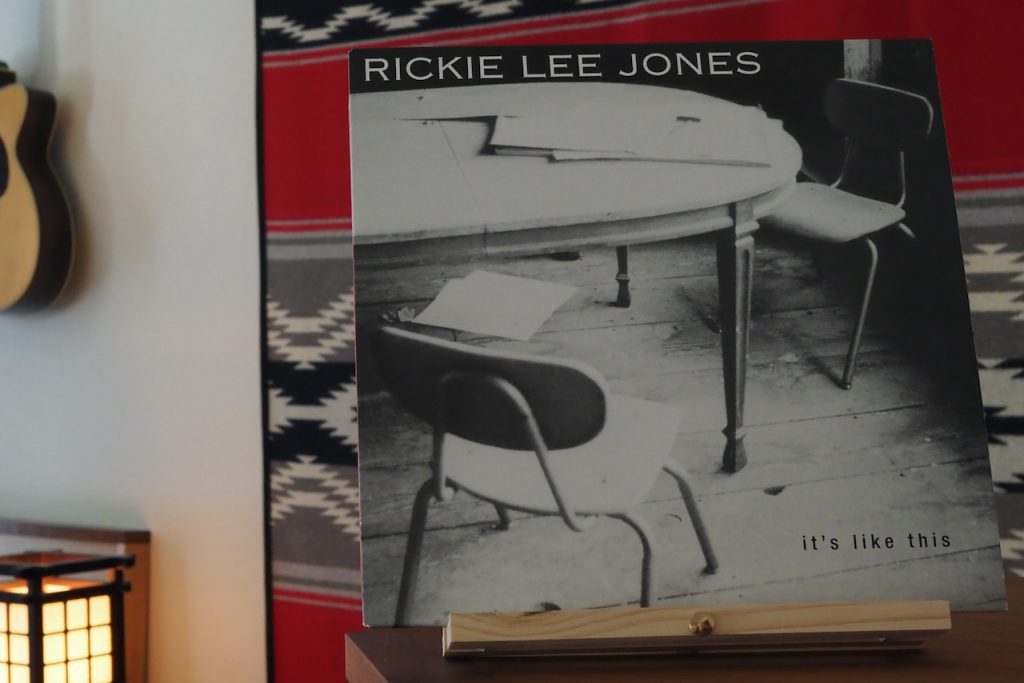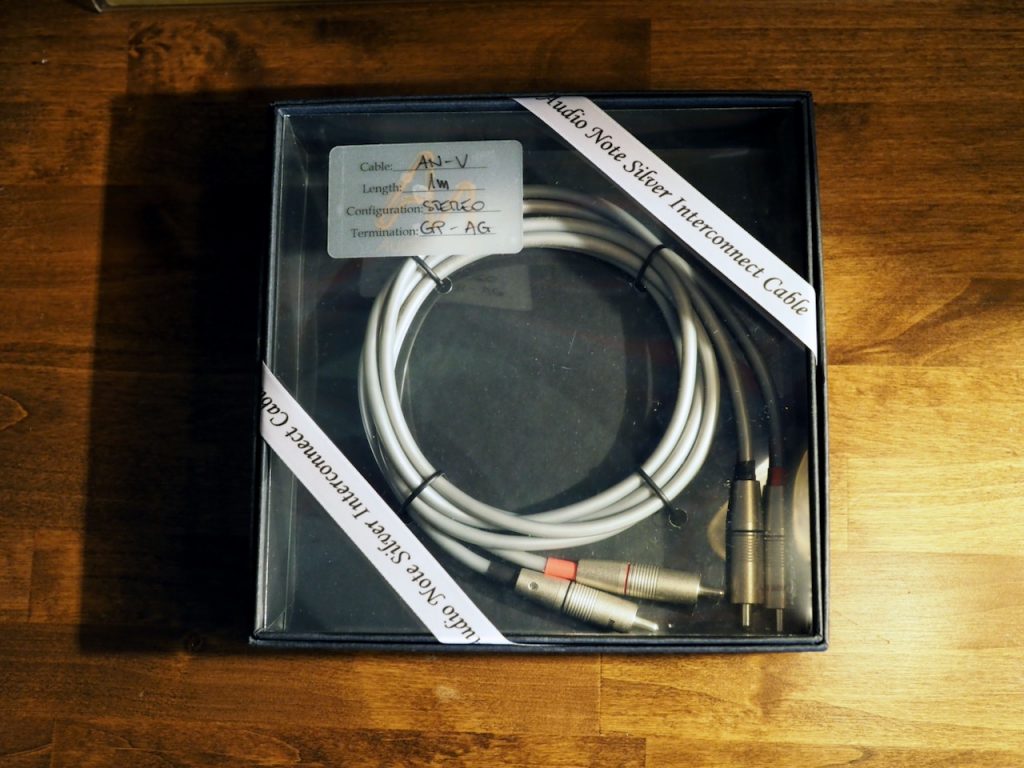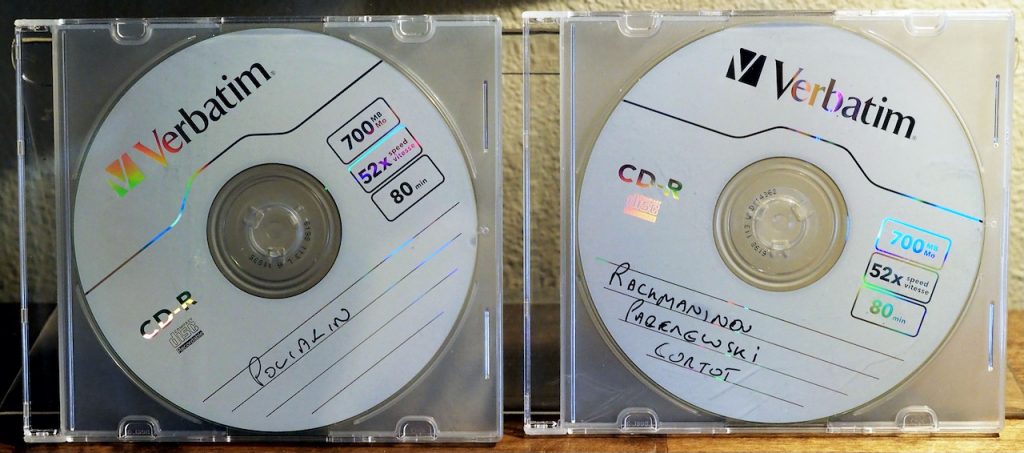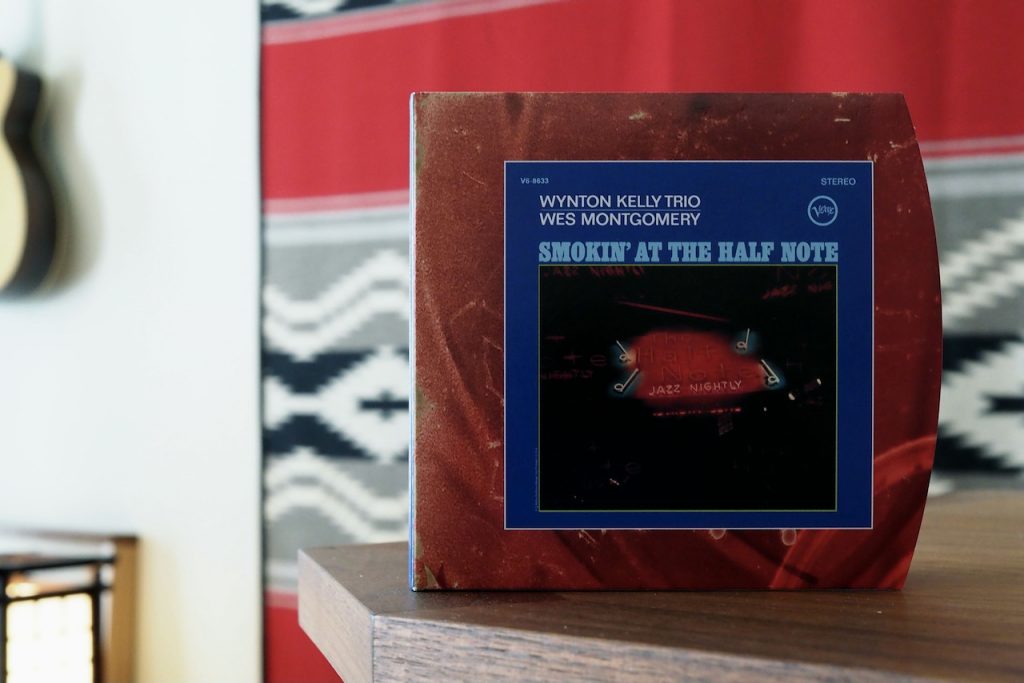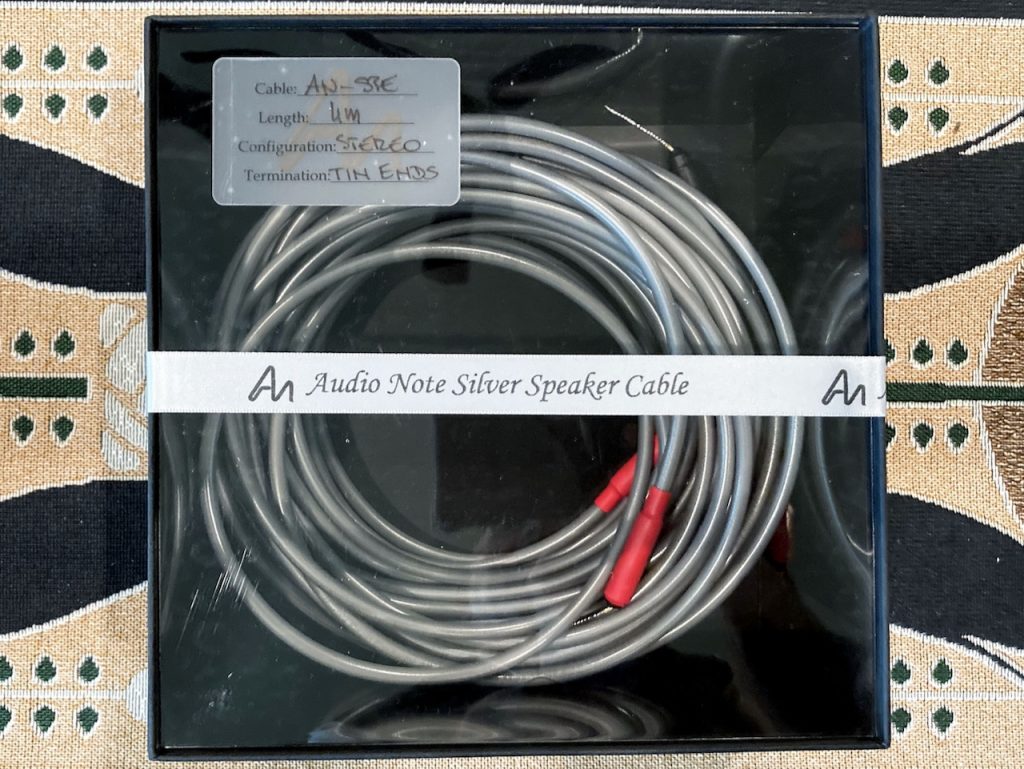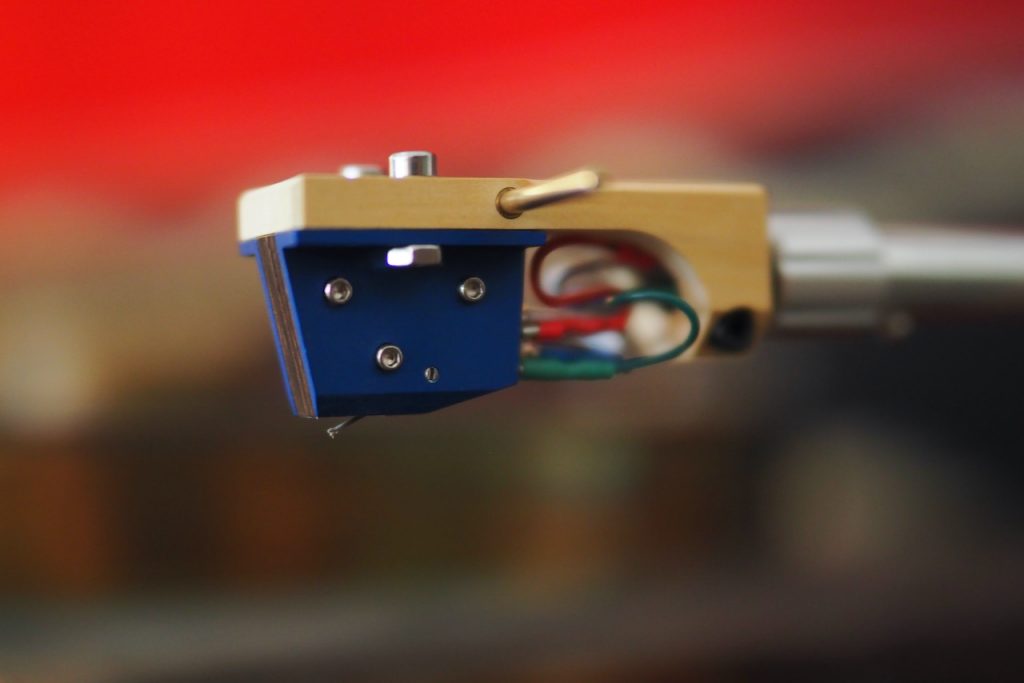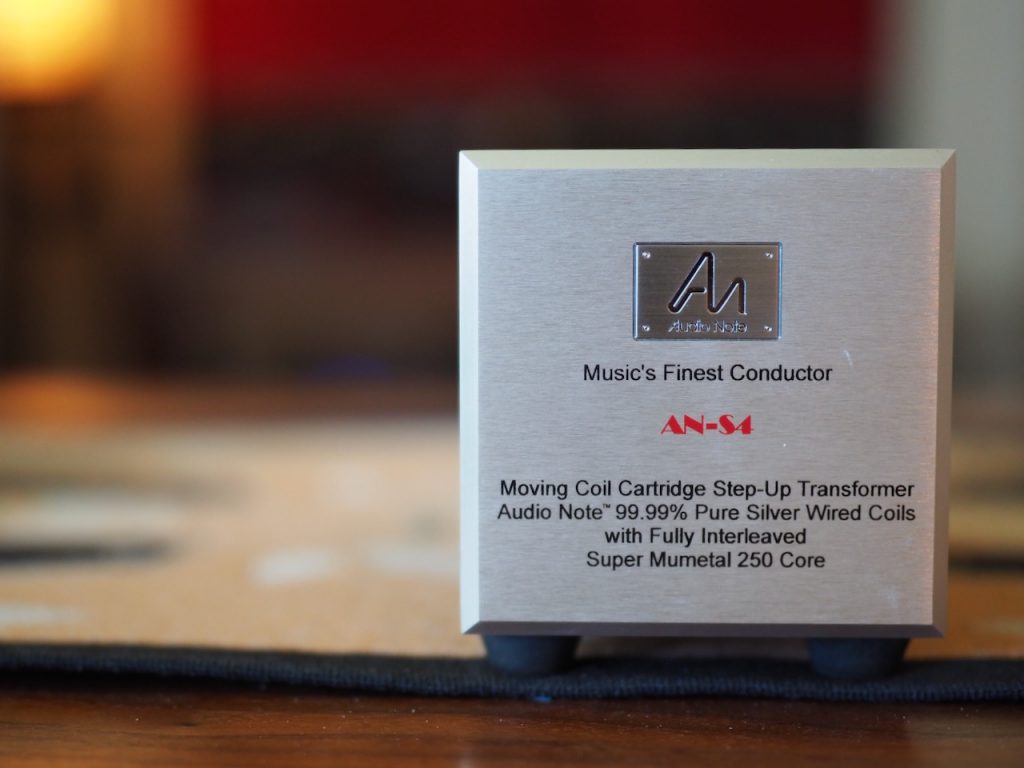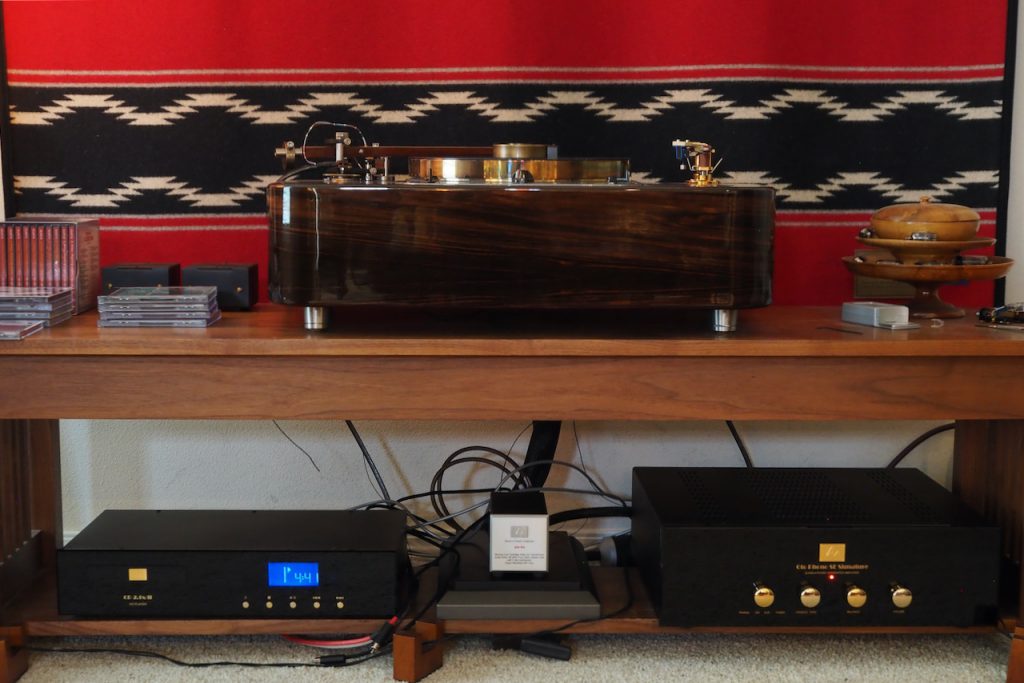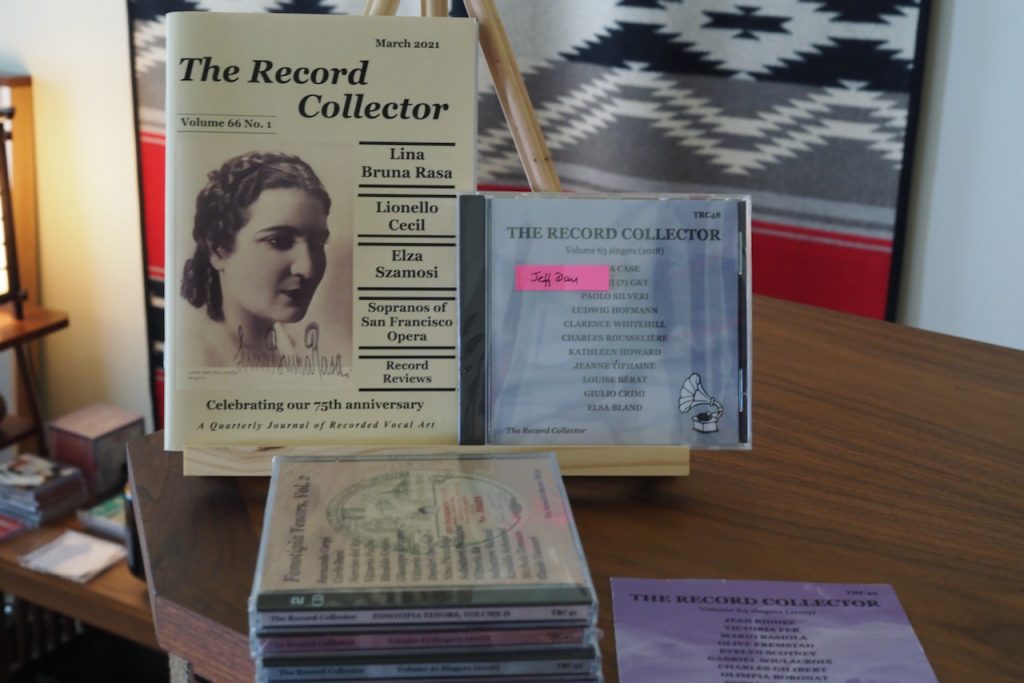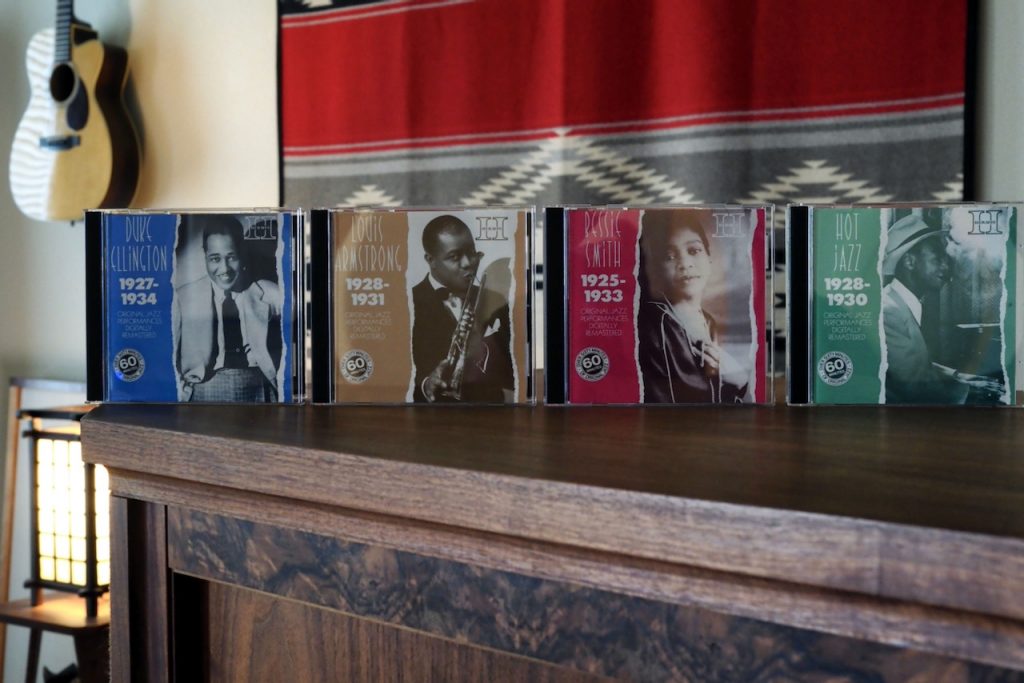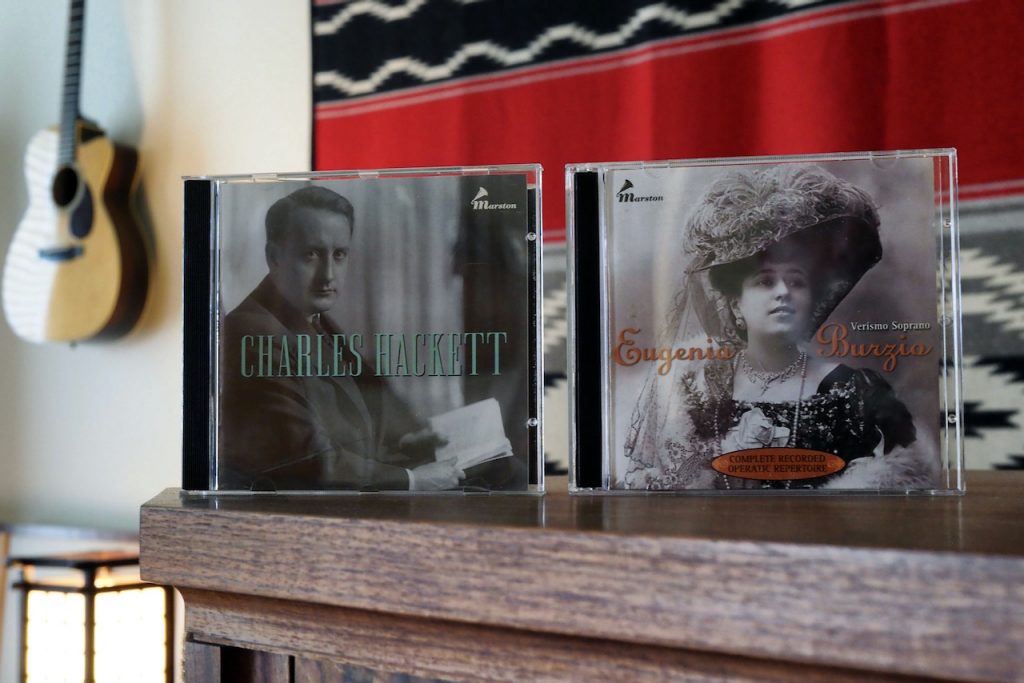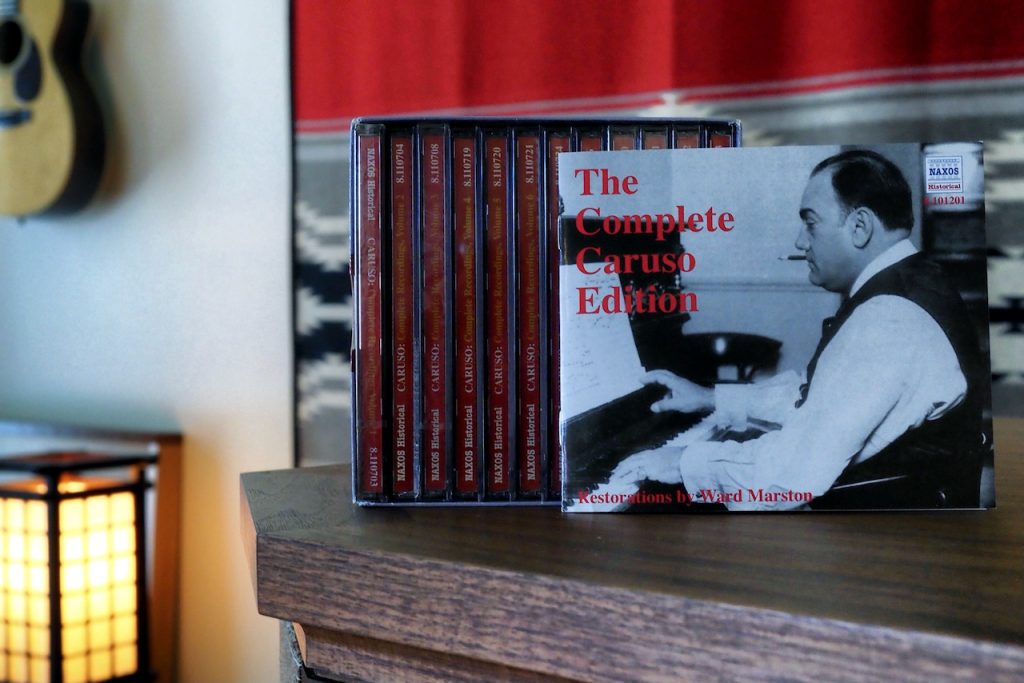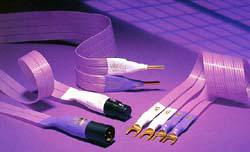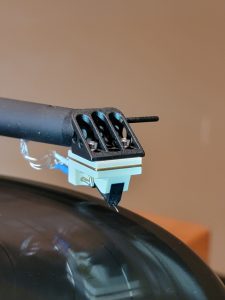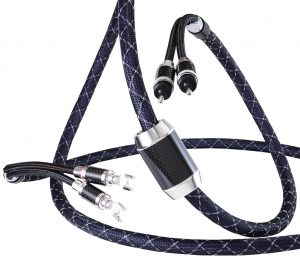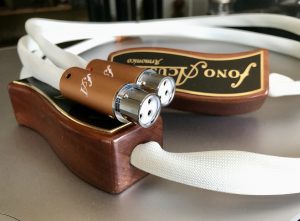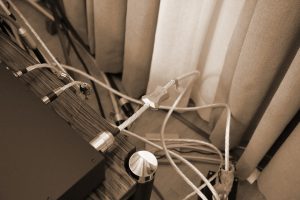My highlight of 2019 was visiting with Peter Qvortrup (below) and the Audio Note (UK) 'family' in Brighton, England.

Meeting Peter Qvortrup, Daniel Qvortrup (Peter's son, below), Andy Grove, and Darko Greguras was a real treat.

Peter and Daniel walked me through the Audio Note (UK) operation, and told me about some of the exciting concepts and products they've been working on developing, and we had an enjoyable listening session at Peter's home—with both vinyl and digital sources—on Peter's cutting-edge Audio Note (UK) system.
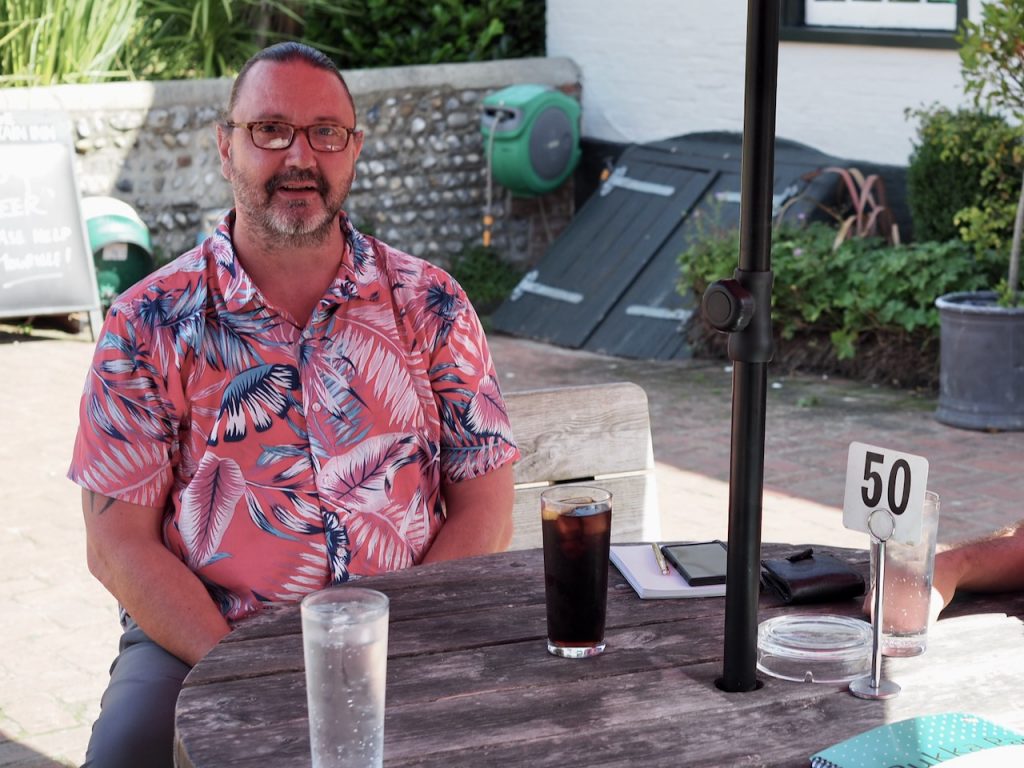
I also had an enjoyable and informative time listening to Andy Grove (above) and Darko Greguras (below) talk about the audio R&D taking place at Audio Note (UK). They are working on some truly exciting projects, and their ideas are beyond the current state-of-art in audio, which bodes well for the future of high-performance audio.
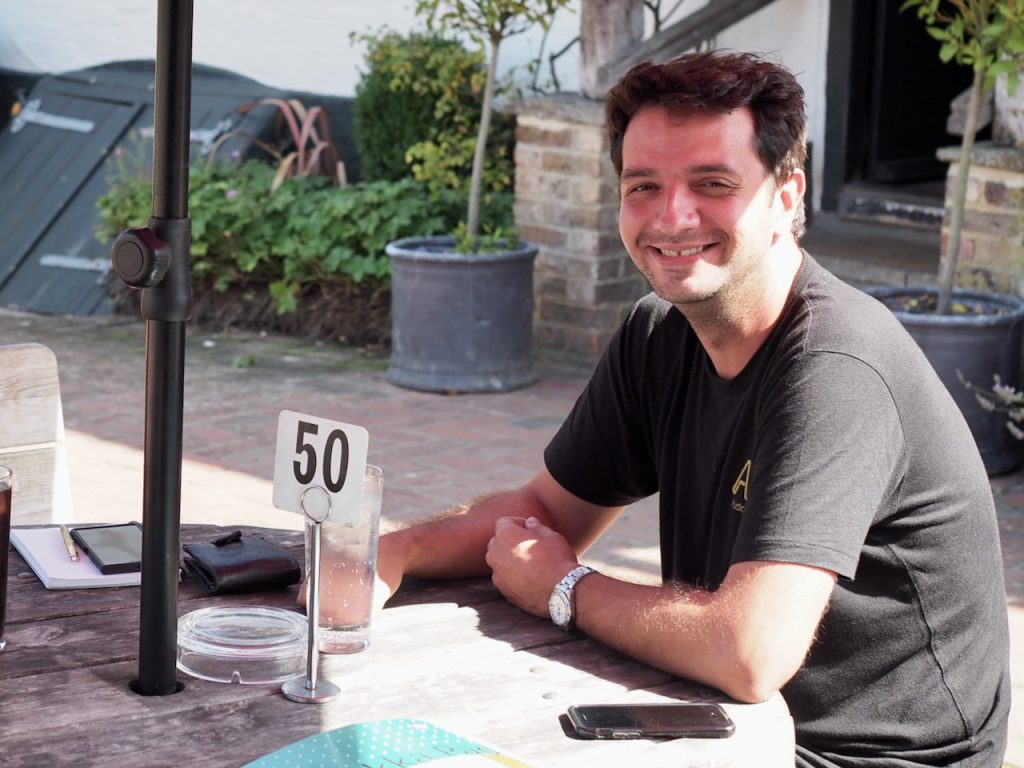
Listening to music with Peter at his home was illuminating (below), as Peter loves to listen to a wide variety of music from all of the recording eras of our historic recorded music canon, so that means utilizing sources for both analog and digital media to accomplish that goal.
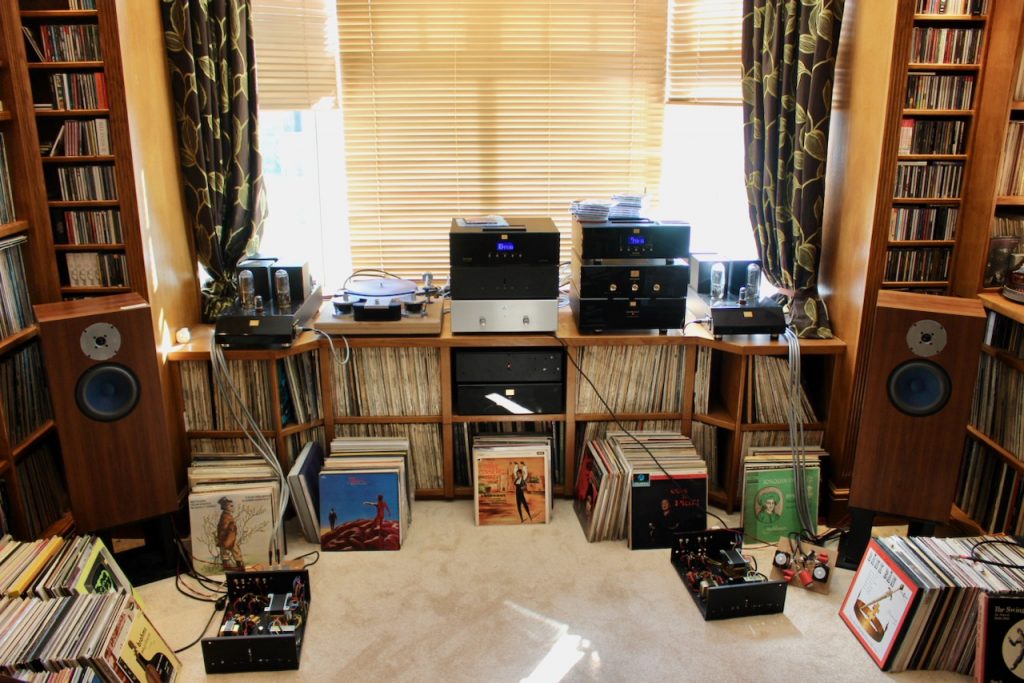
Peter introduced me to 78 transfers from the acoustic (1877-1925) and electric (1925-1945) eras of recording made by his late friend, Anatoly Markovich Likhnitsky, using Anatoly's specialty "RX corrector" that provides a "controlled correction of frequency response" of 78 rpm records that utilizes transformers to provide an equalization curve (in a fashion of similar concept to that of the Audio Note (UK) M9 phono preamplifier).
I was immediately smitten by the superb transfers and the sublime musical performances on those discs, underscoring the tremendous importance to music lovers of having an audio system that can turn recordings from all of our historic eras of recording into engaging musical performances.
Peter also introduced me to the Audio Note (UK) 'Performance Level System' that articulates the level of sophistication and refinement of Audio Note (UK) component designs as a system of seven "levels' of performance, from the entry "Level Zero" components through the state-of-art "Level Six" components.
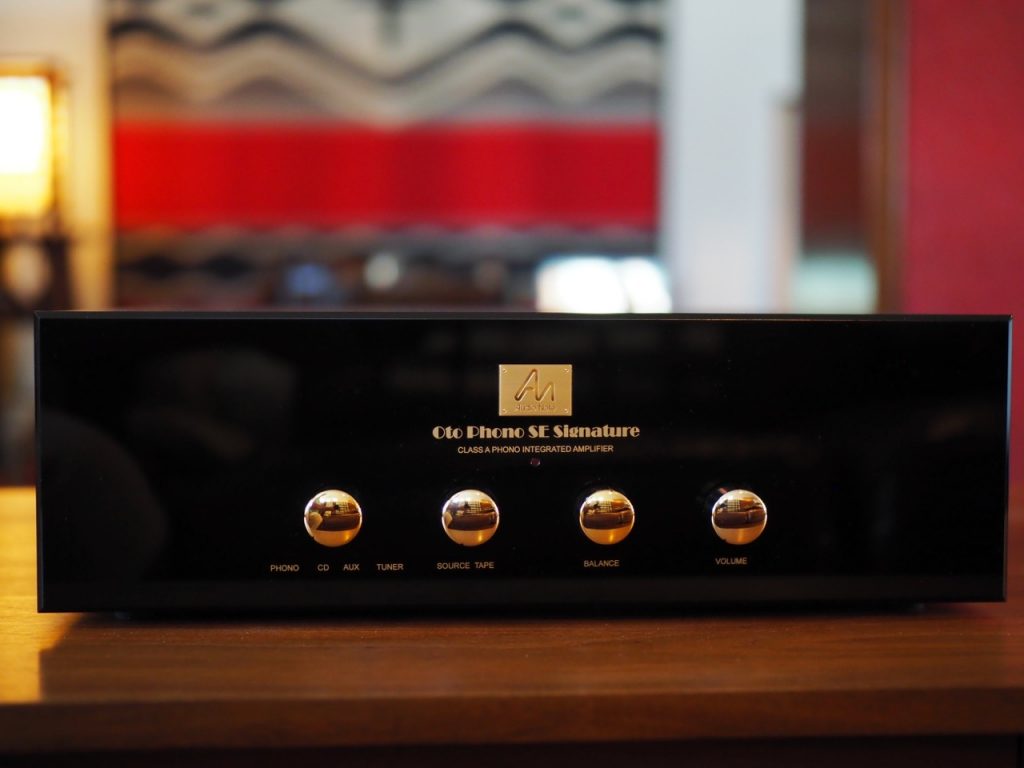
I've listened extensively to the 'Level Two' Audio Note (UK) Oto Phono SE Signature integrated amplifier (above, more HERE), and the 'Level Two' Audio Note (UK) CD 2.1x/II Red Book CD player (HERE), and they possess an impressive combination of musicality and sound quality that I've found to be dangerously addictive.
The Audio Note (UK) CD 2.1x/II Red Book CD player (below), in particular, turned out to be an audio life-changing component for my music listening sessions. Its ability to turn CD transfers of musical performances from all of the recording eras into exciting and engaging listening experiences has been a real ear-opener, and has significantly broadened my listening interests for the better.

As a result, I've experienced immense enjoyment listening to CDs, and in particular, I've got hooked on listening to 78 rpm record transfers to CDs of magnificent musical performances from the acoustic and electric eras of recording, which I have been exploring with great enthusiasm.
In fact, I'm so impressed with the musical performances I've heard on 78 transfers that I've started a regular series of posts about them at Jeff's Place, "The 78 Experience - Feeling The Music," to introduce all of you to their considerable charms.
Peter also introduced me to his Audio Note (UK) philosophy of the importance of complete system design synergy—from source to loudspeakers—for getting the highest level of performance possible from an audio system.
To introduce me to his 'complete system design synergy' Peter has been adding in components one by one for me to listen to to create an Audio Note (UK) 'near full system experience' to write about for you.
First was the Audio Note (UK) Oto Phono SE Signature integrated amplifier, followed by the Audio Note (UK) CD 2.1x/II Red Book CD player, and then the combination of the Audio Note (UK) Io I MC phono cartridge (Level Three), the AN-S4L silver step-up transformer (Level Four), AN-V silver interconnects (Level Three), and AN-SPe silver loudspeaker cables (Level Four).
Just as the Audio Note (UK) CD 2.1x/II Red Book CD player served as an introduction to an Audio Note (UK) Level Two high-performance digital source, this article introduces the Audio Note (UK) Io I MC phono cartridge (Level Three) and AN-S4 step-up transformer (Level Four), which serves as an introduction to an Audio Note (UK) high-performance analog source.
The AN-V silver interconnects (Level Three) and AN-SPe silver loudspeaker cables (Level Four), provides an introduction to Audio Note (UK)'s performance upgrade path of silver cabling.
I've done quite a lot of preliminary listening with the Audio Note (UK) Io I MC phono cartridge, as it served as the primary phono cartridge for my article about the Pass Labs XP-17 phono stage (HERE), and in combination with the AN-S4 step-up transformer for my articles about the Sophia Electric 45 triode vacuum tubes (HERE) and Triode Lab 45 EVO singled-ended-triode integrated amplifier (HERE). If you've read those articles, you know I'm really impressed with the performance of the Audio Note (UK) Io I MC phono cartridge and AN-S4 step-up transformer.
Audio Note (UK) Io I MC Level Three Phono Cartridge ($5028.48 USD)
The Io moving-coil phonograph cartridge design was developed by Kondo-san of Audio Note (Japan) in 1979. The Io was offered to customers as a high-performance moving-coil phonograph cartridge, and was a limited production item with about 40 - 50 cartridges being produced per year.
In 1990 Audio Note (Japan) transferred the license for producing the Io cartridge to Audio Note (UK), who began manufacturing, and then delivering, the Io moving-coil phonograph cartridges in greater numbers to satisfy customer demand.
There are four versions of the Io moving-coil phonograph cartridge available (below), the Io I (Level Three), the Io II (Level Four), the Io Gold (Level Five), and the Io Limited (Level Six), with each higher level providing enhanced performance compared to the level preceding it.
Photo courtesy of Audio Note (UK)
There are seven primary foci of consideration in the Io cartridge design, (1) the generator principle, (2) the mechanical integrity of body, (3) the magnetic circuit and magnet choice, (4) the wire material and quality, (5) the cantilever material, shape and length, (6) the damping, and the stylus choice (7).
The Io I cartridge that is the subject of this article represents the baseline design of the Io range of cartridges, and as one goes up through the range from the Io I, Io II, Io Gold, and Io Limited, each ascending model includes performance enhancing refinements to the baseline design.
The generator principle (1) chosen for the Io cartridge design is the moving-coil generator, as it provides "greater linearity in terms of electrical output from the mechanical movements of the stylus …".
A moving-coil generator produces an electrical output as the coils are moved in a magnetic field by the stylus as it navigates a record groove's encoded signal information.
To maximize the transmission of signal information in the electrical output from the mechanical movement of the stylus, the Io's body (2) employs high-rigidity and structural strength to provide a non-resonant platform that minimizes any signal losses due to vibrations or resonances within the body of the cartridge.
The body of the Io consists of metal side cheeks, the front and back of the body is wood, with the internal metal parts being made of Swedish steel (a very high quality steel), all of which which are fastened together with screws torqued to a particular value to minimize signal degrading vibration via a constrained-layer damping approach.
The internal space in the Io is taken up by the Alnico magnets and the pole pieces, so the Io is nearly a solid piece of metal.
The side plate material for the Io I is aircraft grade aluminum, and for the Io II, Io Gold, and Io Limited the side plate material is "gunmetal," an alloy of copper, tin, and zinc.
For the magnetic circuit (3), the Io I and Io II share the same Alnico magnets and Swedish steel metal parts. The Io Gold utilizes Alnico magnets, but with the pole pieces being made of Permendur, a super low-loss magnetic focusing alloy, which is shaped to focus the magnetic field where it is most needed. The Io Limited utilizes a field coil for the magnetic circuit, and requires a separate DC power supply.
The wire (4) used in the Io cartridge coils is 99.99% pure silver. Audio Note (UK) buys large quantities of silver in bulk, and all of the wire is custom drawn to the specific gauge requirements for the application. The Io cartridges utilize 0.05 mm 99.9% silver wire with a polyurethane coating, low coil turns, and internal shielding, to maximize transmission of signal information. You can see a photo of the coils below.
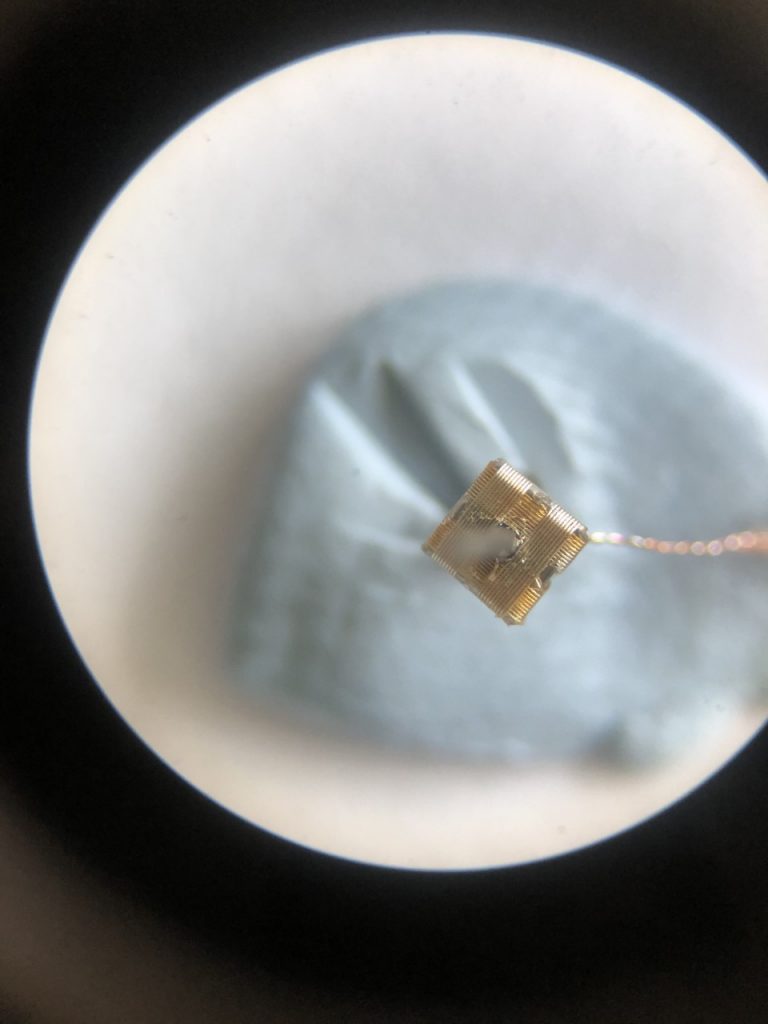
Photo courtesy of Audio Note (UK): Silver coils in the Io moving-coil phonograph cartridges.
The Io phono cartridges utilize a titanium cantilever (5). About the titanium cantilever, Audio Note (UK) says:
"It is on the design and construction of the cantilever that much of the quality of a cartridge depends. Many materials were investigated, Boron, Beryllium, Sapphire. Diamond and Titanium and all except Titanium were disregarded in the final analysis, due to deficiencies in one or more areas. It is vitally important for the cantilever in the stylus assembly to be as rigid as possible, in order to accurately transfer the stylus motion to the coil assembly without adding any unwanted vibration as a result of flexing or bending."
"The optimum material here, was found to be an extra thick walled tapered Titanium tube, the taper being both outside AND inside, since this affords by far the greatest rigidity, despite the fact that Boron offers some theoretical advantages, but these cannot be realized in practice, mainly due to current production techniques."
"It was further found that by using this type of Titanium cantilever, its greater rigidity made the use of a longer cantilever possible. This greatly reduces cantilever excursions on heavily modulated records, which offers three advantages:"
"It is easier for the stylus to track complex, highly modulated grooves. The resultant smaller coil movement reduces the un-linearities in the magnet field, where the field will "bend" less.
Damping can be reduced, as it becomes easier to control stylus movement.
All the above points help reduce distortions and un-linearities introduced by the cartridge during playback."
For damping (6), the Audio Note (UK) Io utilizes a butyl rubber damper, about which Audio Note (UK) says:
"As mentioned above, damping of the cantilever is extremely critical. Too much and the cartridge will sound dull, because a lot of the critical energy from the record will be absorbed in the damper instead of reaching the coils, and thereby reducing the efficiency of the vibrational energy transfer from the record as electrical energy in the cartridge. Conversely, too little damping will make the cantilever prone to uncontrolled excursions, resulting in unwanted distortions and poor tracking."
"Much experimentation led to a precision Butyl rubber damper, offering a wide operating temperature range and minimal hysteresis effects. The tension on the damper is furthermore adjustable, allowing very accurate set-up of each cartridge's individual suspension."
The Io phonograph cartridge uses an Audio Note (UK) Type 2 diamond stylus (7).
"Finally the assembly is completed with the use of a solid diamond stylus, an Audio Note (UK) Type 2. the main advantages this design offers are described in a separate paragraph, but can briefly be described thus: better tracking of high frequency, lower surface noise, lower record wear, longer stylus life, smaller tip mass and lower tracking force."
"The stylus is first "pinched" into place by the cantilever and then glued. using a single component epoxy resin, which needs "baking" for about three hours to harden."
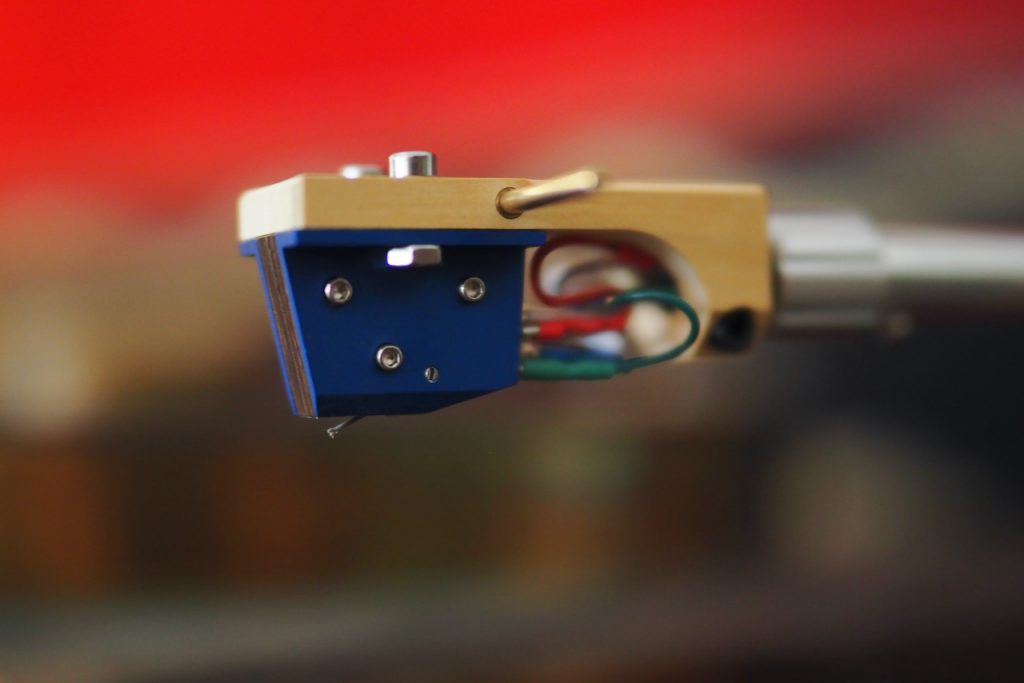
The Io I that is the subject of this article (above, owner's manual HERE) is the baseline offering in the high-performance Io product line, and features the above-mentioned design elements, has an output voltage of 0.04mV, an internal impedance of 1 Ohm, a matching impedance of 3 - 4 Ohms, a frequency range of 10Hz - 50kHz, a recommended 2.5g of stylus pressure, and is available with either a red or blue body.
Audio Note (UK) offers an affordable cartridge rebuilding service so that owners can continue to enjoy their investment in an Io moving-coil phonograph cartridge for years into the future.
In case you are curious, the "Io" name of the cartridges is in recognition of the titanium cantilevers used in the design. The phonograph cartridges are named after the thriller science fiction movie Outland (originally titled Io) starring Sean Connery, about a titanium mining operation on Jupiter's fifth moon, Io.
Yes, the implication is that the Io phonograph cartridges provide an 'out of this world' analog listening experience!
Audio Note (UK) AN-S4L Level Four Step-Up Transformer ($7542.72 USD)
The Audio Note (UK) Io I moving-coil phonograph cartridge has a very low output of 0.04mV, so it requires the use of a step-up transformer for matching it to an Audio Note (UK) phono preamplifier to achieve adequate volume levels.
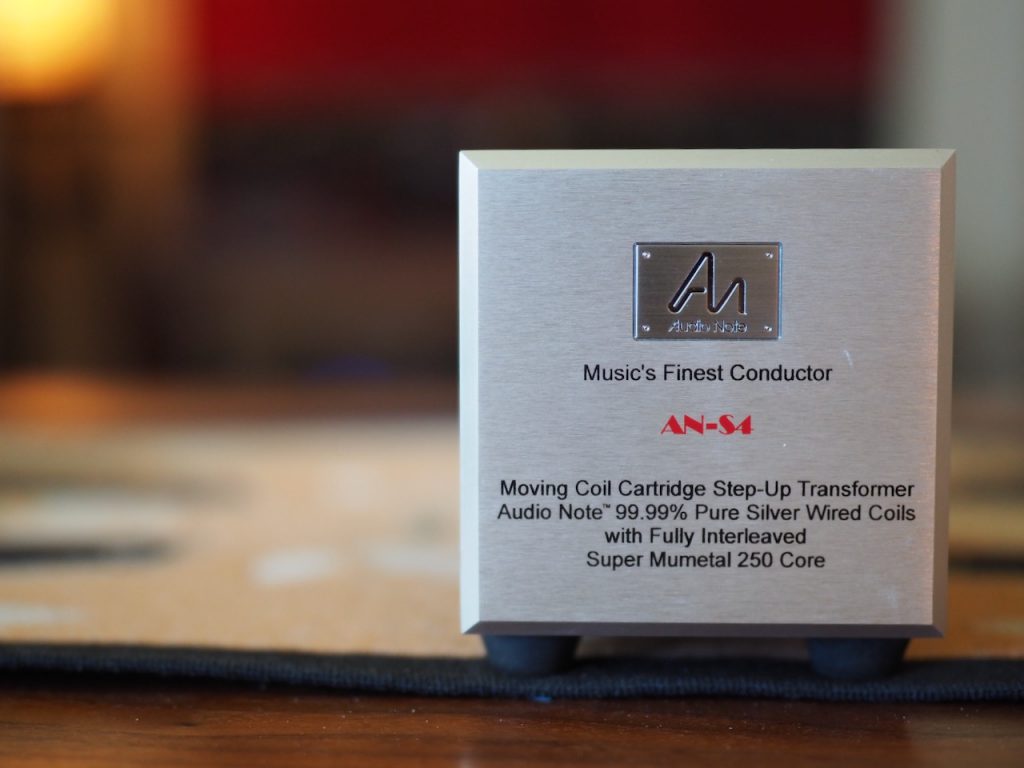
The AN-S4L step-up transformer (above, more HERE) is a passive device that steps-up the very low voltage output of the Io I phonograph cartridge so that adequate volume levels can be achieved through a phono preamplifier.
The AN-S4L is a Level Four step-up transformer, and is the first silver-wired step-up transformer in the Audio Note (UK) step-up transformers product line.
Audio Note (UK) has specific transformer design philosophy goals that you can read about HERE. While the link describes Audio Note (UK) amplifier transformers, the same sorts of design principles also applies to step-up transformers.
The internal transformers used in the AN-S4L are manufactured by Audio Note (UK), with each transformer having an interleaved 0.1mm laminated super mumetal 250 core that has primary and secondary windings wound with 99.99% pure silver wire, with each transformer enclosed in a mumetal screening canister to minimize noise and interference.

The way the AN-S4L works is that the AC current from the Io I phono cartridge induces a magnetic field in the interleaved 0.1mm laminated super mumetal 250 core of the transformer. The magnetic field created by the AC current in the primary windings generates flux in the core, which the secondary windings converts back into current flow to produce the stepped-up voltage at the phono preamplifier. The degree of step-up in voltage is based on the ratio of primary to secondary windings.
Audio Note (UK) AN-V Level Three Silver Interconnects ($918.26 USD for a 1 meter interconnect, each additional meter is $777.66)
The Audio Note (UK) AN-V silver interconnects are at the second level of the silver interconnects product line, and are at Level Three in the Audio Note (UK) performance hierarchy.
The AN-V silver interconnect is intended for use as part of an analogue stereo signal path (as with the AN-S4 step-up transformer per this article), or as a digital interconnect between a transport and DAC, or as I also used them, as stereo interconnects for the Audio Note (UK) CD 2.1x/II Level Two Red Book CD player.
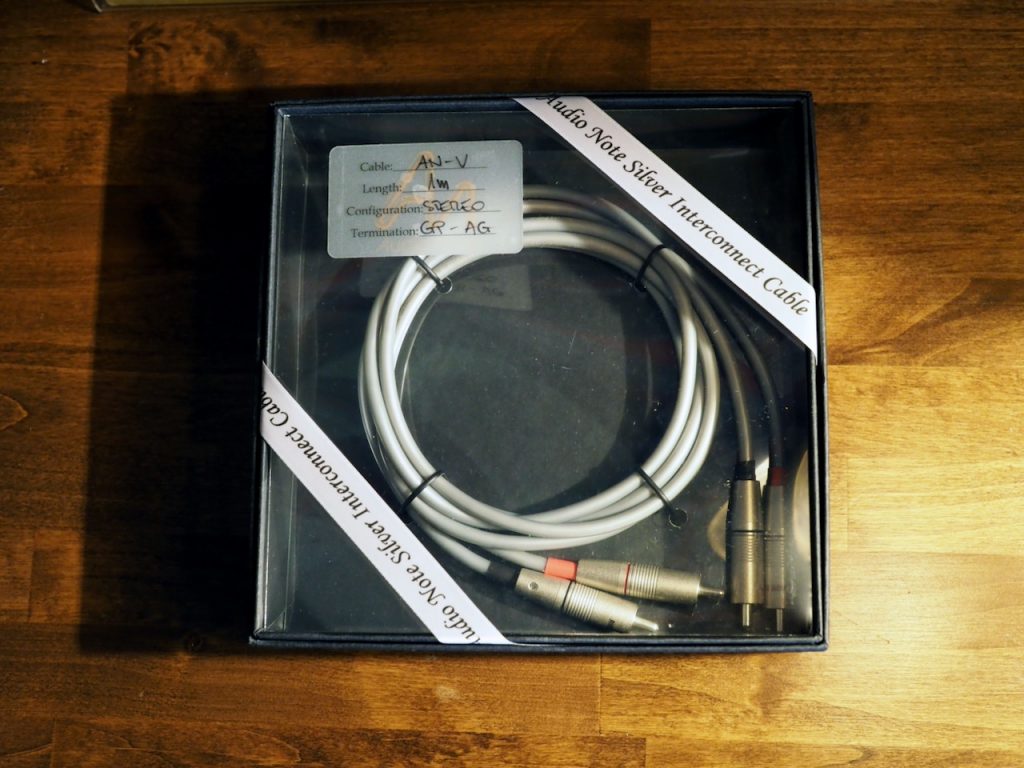
The AN-V silver interconnects (above) are constructed with a 19 strand count of silver conductors, in a twisted pair construction, within a PVC sleeve.
The AN-V silver interconnects are built to order, and are available in a variety of lengths and termination options to meet your preferences.
Audio Note (UK) AN-SPe Level Four Silver Loudspeaker Cables ($2,471.76 USD for a 1.5 meter pair of single-wire speaker cables)
Audio Note (UK) builds all loudspeaker cable sets to order per the customers preferred length, conductor material (copper or silver), terminations (bare wire or banana or spade connectors), and configuration (single or bi-wire sets).
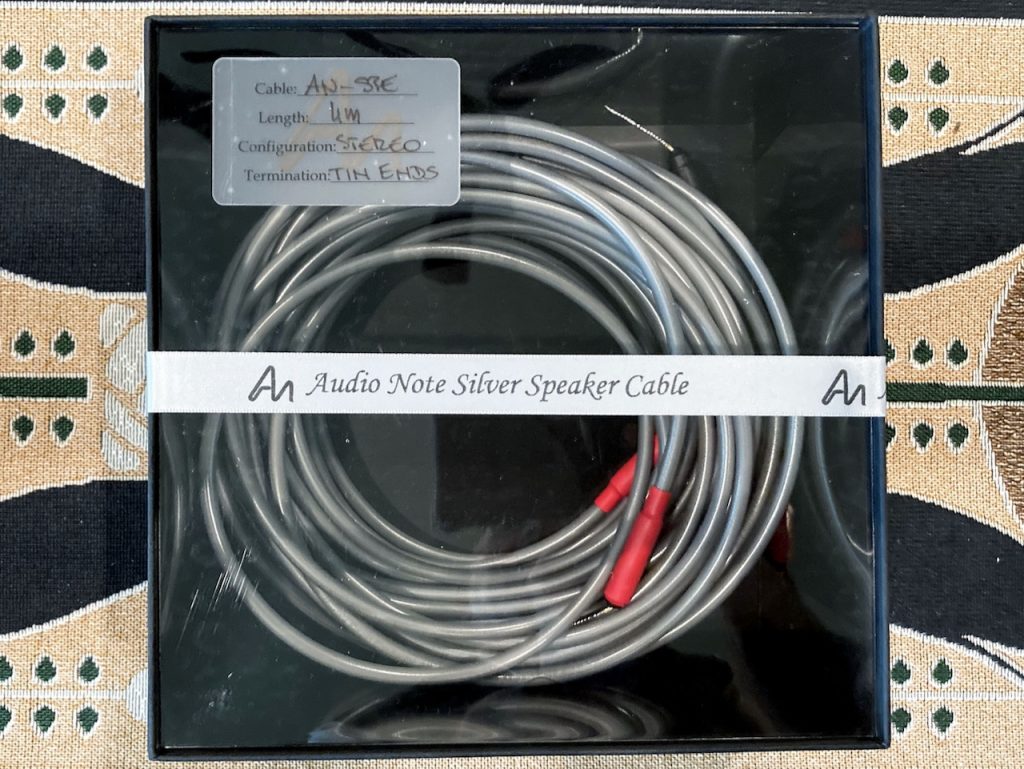
While Audio Note (UK) offers product lines of both copper and silver cables for their customers, the AN-SPe loudspeaker cables I am writing about come from their product line of silver loudspeaker cables, and are a Level Four product in the Audio Note (UK) performance hierarchy.
Audio Note (UK) AN-SPe silver loudspeaker cables (above) utilize 19 strand silver Litz conductors, which are custom drawn to their specific gauge requirements, and are then coated in a variety of dielectric polymers depending on the application the particular cable was designed for. The coated Litz conductors are wrapped in a silver colored PVC sleeve to keep everything together.
Note: The Audio Note (UK) AN-SPe speaker cables cost $389.88 per 1-meter mono piece, single wired termination costs $132.46. The shortest length of AN-SPe speaker cables that are available is 1.5 meters.
Review System
For this article I used my pair of Tannoy Westminster Royal Special Edition loudspeakers (HERE), which feature custom crossovers built from Frederik Carøe's Duelund Coherent Audio CAST capacitors, inductors, and resistors, that elevated their performance rather dramatically over the stock crossovers.
As Tannoy Westminster Royal SE loudspeakers (below) owners' will tell you, the high-frequency horn of the 15-inch dual concentric driver is extremely revealing, which is at least part of the reason why they are used by a number of electronics designers for evaluating their amplifier designs (e.g. Nelson Pass and Wayne Colburn of First Watt / Pass Labs fame both use Tannoy 15-inch dual concentric drivers in custom cabinets as part of their process for evaluating new electronics designs).
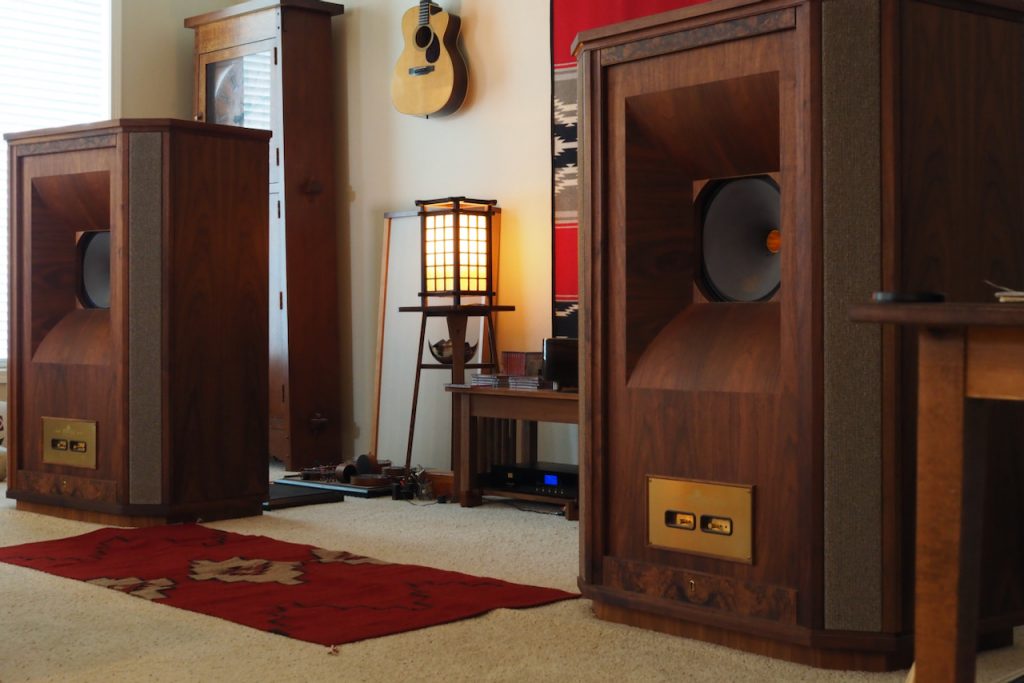
I might also add that the Duelund CAST crossovers (below) of my Westminsters use pure silver Duelund CAST PIO capacitors in the high-frequency circuit, which are extremely revealing, giving a very clear view into upstream components' performance.
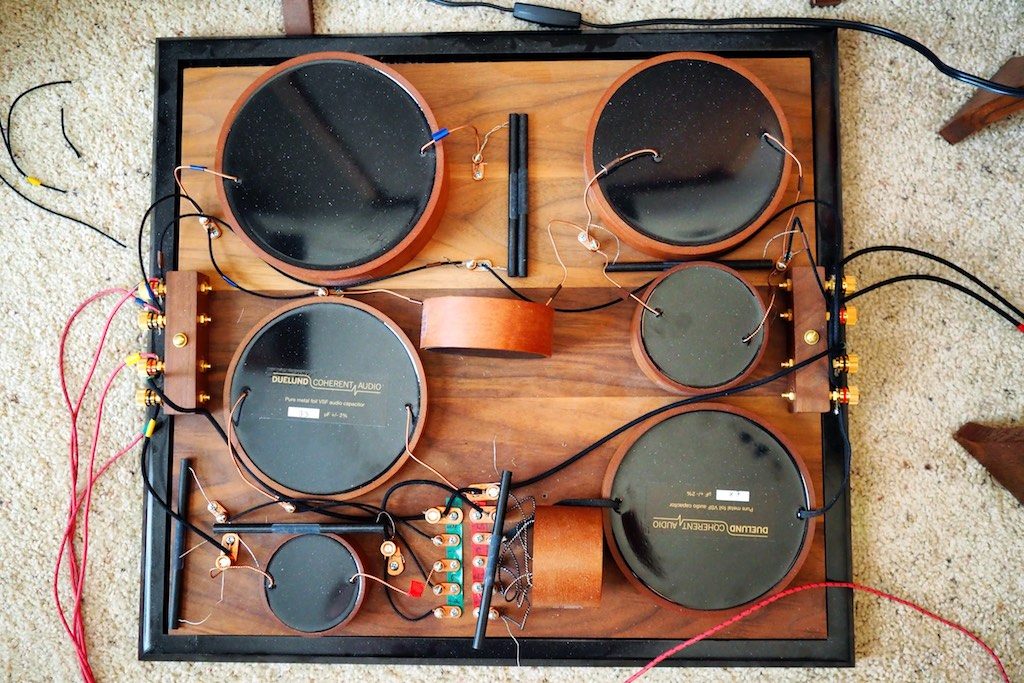
I have found all of the Audio Note (UK) components to be excellent matches to my Tannoy Westminster Royal Special Edition loudspeakers during long-term listening sessions.
Listening Impressions
This article was more complex to write than usual, given I'm writing about multiple Audio Note (UK) components, and addressing my experiences with several Audio Note (UK) performance philosophies.
I'll be discussing my listening impressions of Peter's recommended combination of the Audio Note (UK) Io I MC phono cartridge, the AN-S4 step-up transformer, and the AN-V silver interconnects as an Audio Note (UK) high-performance analog source.
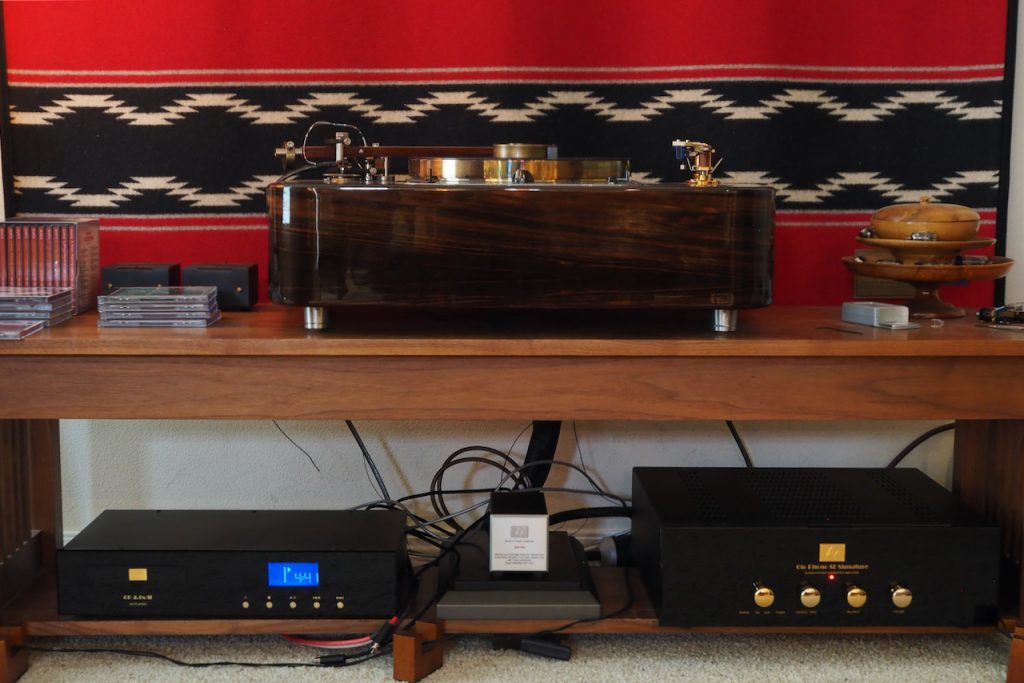
Adding these three components as an Audio Note (UK) analog source to the combination of Audio Note (UK) Oto Phono SE Signature integrated amplifier and Audio Note (UK) CD 2.1x/II Red Book CD player (above) that I've been listening to also provides an opportunity for me to comment about my listening experiences related to the Audio Note (UK) design philosophy of the 'complete system design synergy' that results from building a system of all - or nearly all in this case—Audio Note (UK) components.
The Audio Note (UK) design philosophy says that overall system performance is enhanced more than one would expect from the sum of the performance of the individual components, due to each component being designed and voiced to synergistically to elevate overall system performance as more Audio Note (UK) components are added into an audio system.
In my case, adding in the analog source components creates a 'near full system experience' with Audio Note (UK) components, with the exception of loudspeakers and turntable, as I'll be utilizing my Tannoy Westminster Royale SE loudspeakers and my Classic Turntable Company hot-rodded Garrard 301 turntable for this article.
I'll also be addressing my listening impressions of the Audio Note (UK) 'Level System' for speaker cables and interconnects.
The Audio Note (UK) components are designed and voiced such that the Audio Note (UK) AN-V silver interconnects and AN-SPe silver loudspeaker cables represent a performance upgrade path over copper interconnects and loudspeaker cables.
I don't have any Audio Note (UK) copper interconnects or speaker cables here to compare with directly, so my usual Duelund DCA16GA tinned-copper interconnects and speaker cables were pressed into service as comparators.
For the Audio Note (UK) AN-S4 step-up transformer I'll also compare its recommended match of Audio Note (UK) AN-V silver interconnects to the shielded Belden 8402 tinned-copper microphone cable interconnects that I normally use to get an idea of the magnitude of performance upgrade that the Audio Note (UK) AN-V silver interconnects are intended to be.
Finally, I want to discuss how having both Audio Note (UK) digital and analog sources enhanced my exploration and appreciation of recorded music from all of the recording eras of our recorded music canon: the acoustic (1877-1925), the electric (1925-1945), the magnetic (1945-1977), and the digital (1977-now) eras.
Ok, with those preliminaries stated up front, let me start by discussing my listening impressions of Peter's recommended combination of the Audio Note (UK) Io I MC phono cartridge, AN-S4 step-up transformer, and AN-V silver interconnects.
Audio Note (UK) Io I Moving-Coil Phonograph Cartridge, AN-S4 Step-Up Transformer, and AN-V Silver Interconnects
These three components as an analog source are a recommended combination for introducing an Audio Note (UK) customer to the performance benefits offered by an Audio Note (UK) Io I moving-coil phono cartridge, and an all silver signal path from the cartridge to an Audio Note (UK) phono stage.
The Audio Note (UK) Io I moving-coil phonograph cartridge has silver generator coils, the Audio Note (UK) AN-S4L step-up transformer has silver transformer windings, and in combination with the Audio Note (UK) AN-V silver wire interconnects, that made for an all silver signal path to the Audio Note (UK) Oto Phono SE Signature integrated amplifier's phono stage.
This recommended combination of three Audio Note (UK) analog source components are a combination of Level Three (the Io I MC phono cartridge and AN-V silver interconnects) and Level Four (AN-S4 step-up transformer) components, and represent the entry level into a full silver signal path consisting of the cartridge, step-up transformer, and cables in the Audio Note (UK) product lines.
In this article I'll discuss their performance in the context of the 'Level Two' Audio Note (UK) Oto Phono SE Signature integrated amplifier, then I'll be discussing their performance in a future article with the new 'Level Three' Audio Note (UK) Meishu Phono Tonmeister 300B singled-ended-triode integrated amplifier, to provide insights into what you can expect performance-wise from a full suite of Audio Note (UK) Level Three and Four components.
The goal of having an all silver signal path from the phono cartridge to the phono stage is to provide the maximum amount of recorded information from an LP to the listener in both musical and sound quality terms.
The amount of musical information this Audio Note (UK) analog source combination provided was extraordinary, and on the my George Shearing and Jim Hall First Edition album I marveled at the level of nuance I could hear from Jim's guitar and George's piano.
All of that resolution would be for naught if the presentation of the music wasn't musically convincing in terms of attributes like timbre, tone color, dynamics, tempos, harmonies, etc., but it was musical in a live-like "real" way which made the high-resolution even more impressive for me.
The presentation of the music made it feel like I had George Shearing and Jim Hall playing in my living room, with all the nuance, musicality, and gorgeous tone one would expect with them sitting nine feet from my listening position.
The combination of high-resolution and live-like musicality provided a very compelling view of the musical performances on First Edition, with Jim Hall's and George Shearing's solos and comping being masterful and emotionally engaging.
I found this level of resolution and honest portrayal of musicality helpful for giving insights into how Jim Hall played the fourth track on side two, "Emily," which I am trying to figure out how to play on my guitar at the moment.
So what does all the resolution provide? A live-like presence of the Jim Hall and Ed Shearing duets in my living room. I could tell how much Jim rolled off the treble on his guitar, where on the fretboard he was playing, all the nuances of the tone colors and the strings' overtones, and of course Jim's beautiful technique.
My friend David commented a number of times, "Listen to that … you can even hear them breathing!"
I found repeatedly with albums that there was a lot more information in those record grooves than I had heard from them before with my other cartridges, step-up transformers, and wire combinations. The level of information recovery from record albums with the Audio Note (UK) analog front end was truly extraordinary.
I should mention that First Edition is not an 'audiophile-style' recording that has been treated with extraordinary care to maximize sound quality, it is just a regular recording of great musicians playing great music. This is a recording of duets, and the way it was produced places both musicians on top of each other in the center of the sound field (as you would hear in a mono recording), instead of positioning them as they might have been in a live performance.
The take home message here is that the Audio Note Io I cartridge, AN-S4 SUT, and AN-V silver interconnects took this average quality recording of First Edition and turned it into a wonderful music listening experience, that showed jazz pianist George Shearing and jazz guitarist Jim Hall to be the masterful artists they were, as they took turns comping and soloing in support of each other to produce this wonderful album of duets.
So, the Audio Note Io I cartridge, AN-S4 SUT, and AN-V silver interconnects not only extracted a remarkable amount of recorded information from the album to inform me about the recording style and quality, but it also presented a believable 'flesh and blood' sense of musicality (timbre, tone color, tempos, melodies, etc.) that delivered the full emotive power of George's and Jim's duets.
These Audio Note (UK) components took what is in reality a record of average recording quality and imbued it with a degree of sound quality and musicality that I didn't think the album was capable of delivering. I found that to be impressive.
A quick observation on interconnects: I tried substituting a pair of my Belden 8402 tinned-copper microphone cable interconnects in place of the Audio Note (UK) AN-V silver interconnects, and the result was quite nice musically and sonically.
The Belden 8402 interconnects were richer and warmer sounding than the Audio Note (UK) AN-V silver interconnects, but they were not as transparent and resolving of nuance, and sounded a little rougher and courser overall. With the Belden 8402's the guitar and piano notes had less overtone 'bloom', for example, and the Belden interconnects were not nearly as revealing of the recording quality.
While I found the Belden 8402 interconnects to have respectable performance (more sins of omission than sins of commission), clearly the Audio Note (UK) AN-V silver interconnects were a better match to the voicing of the Audio Note (UK) Io I moving-coil phonograph cartridge's silver generator coils, and the Audio Note (UK) AN-S4L step-up transformer's silver transformer windings.
Considering that this combination of Audio Note (UK) Io I moving-coil phonograph cartridge and Audio Note (UK) AN-S4L step-up transformer weighs in at a hefty $12,571.20 USD, I suspect the additional $918.26 USD for a pair of Audio Note (UK) AN-V 1-meter silver interconnects will be something Audio Note (UK) customers will consider to be mandatory for getting the best performance out of these silver-themed components.
This Audio Note (UK) trio of Io I cartridge, AN-S4 SUT, and AN-V silver interconnects demonstrated an impressive ability to make an average recording like First Edition sound way better than it had any right to, but now lets move on to a recording of great music from the early days of recording, for an even greater challenge to these components adaptability to varied recording quality.
A great example of superb musical performances sourced from 78 records is the Heifetz-Barbirolli The Pre-War HMV Recordings of Saint-Saëns and Sarasate—recorded 1935-1937 by EMI during the electric recording era—that violinist Hilary Hahn chose for Rob Cowan's article, 250 Greatest Recordings of All Time: Chosen by 35 of the World's Leading Musicians article in Gramophone (HERE).
Listening to these performances with the Audio Note (UK) combination of Io I moving-coil phonograph cartridge, AN-S4L step-up transformer, and AN-V silver interconnects was so musically intense it gave me goosebumps while listening.
Barbirolli's conducting, and Heifetz's violin playing, combined for breathtaking performances that had me on the edge of my seat while listening. The London Symphony Orchestra was in fine form, Heifetz's tone was sublime, and Barbirolli's conducting was deeply inspiring.
The Audio Note (UK) Io I, AN-S4L, and AN-V made these ancient recordings of great performances come alive with a color and splendor that you might not guess those vintage 78 records would be capable of, underscoring the importance of an audio system that is able to play music well from all of our historic recording eras, and the varied quality of recording and recording styles that represents.
It was easy to understand why Hilary Hahn chose the Heifetz-Barbirolli Saint-Saëns and Sarasate performances as one of the all time greatest recordings of music, upon listening to it with the Audio Note (UK) Io I, AN-S4L, and AN-V combination. The music that flowed out of the album was absolutely superb.
I could hear distinctly that the records were from the electric recording era, but their limitations in recording quality did not interfere at all with the Audio Note (UK) Io I, AN-S4L, and AN-V combination's ability to turn them into jaw-droppingly good musical performances, and inspired listening sessions.
Now let me tell you about what I heard from the Audio Note (UK) Io I, AN-S4L, and AN-V combination when playing a typical audiophile-style album—Rickie Lee Jones' It's Like This—that has had tender loving care lavished upon it by Chad Kassem's Analogue Productions record label during remastering and production to achieve exceptional sound quality.
I have the Analogue Productions 45rpm version of It's Like This, which was a tour de force combination of exceptional sound quality production values, and of course there's Rickie Lee's massive music-making skills that are on full display in this album that was nominated for a '2001 Best Pop Traditional Record Grammy Award' of cover songs.
Audiophiles will want to know that the Audio Note (UK) Io I, AN-S4L, and AN-V combination presented It's Like This as a remarkable high-fidelity experience that was full of musical and recording artifact nuance.
The soundstage was presented as deep, wide, and of natural height, with impressive and vivid imaging arrayed upon its width, depth, and height dimensions.
The recording features a black background with a nice touch of recorded (or added) ambience, Rickie Lee's vocals are front and center, and the instruments are all presented at volumes that were ideal for accompaniment in order to highlight Rickie's vocals. Kudos to those in charge of production and engineering of the album for a job well done, and for providing us with as an exemplary example of the recording arts.
The musicality aspects of It's Like This—timbre, dynamics, melodies, harmonies, rhythms, tone color, etc., were well within the believable range with the Audio Note (UK) Io I, AN-S4L, and AN-V combination playing the music, to produce an exceptionally emotionally engaging and live-like presentation.
The Audio Note (UK) Io I, AN-S4L, and AN-V combination was truly extraordinary on It's Like This, and is easily the highest-performing analog front end I've had the privilege to listen to in my own home.
The Audio Note (UK) kit presents audiophile-style recordings as the remarkable works of the recording arts that they are, but it doesn't stop there, as it also presents the musical performances as the works of musical inspiration that they are, and as an analog source they can do that across a spectrum of recording quality from vintage times to modern times with ease.
Personally, I've never heard an analog front end that is this capable. Capable of telling the listener all about the styles and choices of the recording arts used to produce an album. Capable of revealing the differences in recording quality between albums. Capable of never letting the recording quality of albums hinder presenting the musical performances with all of the musicality and emotional engagement that they deserve.
I can tell you this for sure, listening with the Audio Note (UK) Io I, AN-S4L, and AN-V combination as my analog source revealed to me that there was a lot more music lurking in those vinyl grooves than I ever realized, it just takes the right audio equipment to extract it.
Ok, those are three examples of album listening impressions for you with the Audio Note (UK) Io I, AN-S4L, and AN-V combination, all featuring excellent musical performances, and with varied levels of recording quality that are representative of what one typically runs across while exploring albums from the different eras of recording.
I've listened to a great many albums with the Audio Note (UK) Io I, AN-S4L, and AN-V combination, and I can say their combined performance was at a considerably higher level than any of the other cartridges I own personally (Ortofon SPU Classic G MkII, Soundsmith Zephyr MK III & Carmen MK II, EMT TSD15 SFL, etc.).
The Audio Note (UK) Io I MC phonograph cartridge is an impressive achievement indeed, as it routinely takes any album of any recording quality and turns it into an engaging musical experience, while providing both state-of-art sound quality and musicality in one package.
Nothing else I've heard in my system comes close to the Io I's level of performance. From a musicality perspective, the Io I was never less than absolutely brilliant in the way it rendered timbral textures, or the way it resolved tone color, melodies, harmonies, rhythm, tempo, and dynamics, for example.
In terms of audiophile-style sound quality, recording traits like transparency, resolution, soundstage, recorded acoustic (real or otherwise), and imaging, the Io I MC phonograph cartridge presented all of those aspects of the recordings in truly impressive fashion.
Also, generally speaking, the Audio Note (UK) Io I combined with the AN-S4L step-up transformer, and the AN-V silver interconnects, had a smooth, nuanced, and relaxed clarity that provided a sophisticated and musical presentation that I found quite addictive and endearing.
My guess is that a big slice of that smooth, nuanced, and relaxed clarity is due to the silver generator coils in the Audio Note (UK) Io I moving-coil phonograph cartridge, the silver transformer windings in the Audio Note (UK) AN-S4L step-up transformer, and the silver wire in the Audio Note (UK) AN-V silver interconnects. An all silver signal path done right—like it is here—can be truly impressive from both a sound quality and musicality perspective.
Perhaps most importantly, all of those traits integrated in terms of musicality and sound quality, in a way that maximized my emotional response during the listening experience.
There were a number of times when I was listening and trying to take notes about what I was hearing and feeling while listening to music with this suite of audio equipment from Audio Note (UK), and I would end up with a blank page.
The music drew me in so much with the Audio Note (UK) Io I, AN-S4L, and AN-V combination that I had a hard time focusing analytically to write this review. The combined effect of superb musicality and sound quality was at times too powerful for me to listen to the music and think about it analytically at the same time, which is perhaps the greatest praise I can bestow upon these components.
I might add that over the time I've been listening to the the Audio Note (UK) Io I, AN-S4L, and AN-V combination, that I've also found it to 'play well with others', as it also excelled as a source for the Triode Lab 45 EVE SET integrated amplifier and Leben RS-30EQ phono equalizer combination, which are very different designs compared to the 'Level Two' Audio Note (UK) Oto Phono SE Signature integrated amplifier.
Also, the Audio Note (UK) moving-coil phonograph cartridge was a very happy match on its own with the Pass Labs XP-17 phono preamplifier (review HERE), Pass Labs XP-12 line-level preamplifier (review HERE), and Pass Labs XA25 power amplifier (review HERE), with my Tannoy Westminster Royal SE loudspeakers, a combination of audio equipment that earned very high praise from my jazz guitarist friend David Gitlen as being one of his favorite audio experiences at my place.
As an analog source, the Audio Note (UK) Io I, AN-S4L, and AN-V combination is without peer in my home listening sessions.
Yes, its an expensive combination of equipment, but with the Audio Note (UK) Io I MC phono cartridge, AN-S4L step-up transformer, and AN-V silver interconnects combination, you definitely get what you pay for.
Very, very, highly recommended for those seeking the highest fidelity from their record collection.
Audio Note (UK) Silver Cables
Lets start with my listening impressions of the Audio Note (UK)'s silver cables, the AN-V silver interconnects (Level Three), and the AN-SPe silver loudspeaker cables (Level Four).
I haven't heard the entry level copper cables in the Audio Note (UK) cable product lines that I can discuss as comparators, so I'll be offering brief comparisons to my long-standing nuevo-vintage favorites, the Duelund DCA16GA tinned-copper interconnects (terminated with Duelund plastic-free RCA connectors), and unterminated Duelund DCA16GA tinned-copper speaker cables.
Audio Note (UK) AN-V Silver Interconnects
The first album I'll discuss was from early in the history of the recording arts, Miron Poliakin Plays Glazunov, Tchaikovsky, Beethoven, Schubert, and Sarasate. The musical performances on this album were recorded 1938-1939 during the electrical recording era, when electrical microphones made their first appearance in the recording arts.
The music on this album was sourced from 78 records using direct analogue remastering by recording engineer Anatoly Likhnitsky in the former USSR using his AML+ methodology and remastering equipment.
Anatoly's transfers were done without any noise reduction of the surface noise inherent in the old shellac records, as any removal of ticks and pops also removes musical nuance that can rob those ancient musical documents of remarkable performances of music of life and vitality.
Having heard Anatoly's transfers with noise reduction versus AML+ with no noise reduction at Peter's home, I can tell you that the musical fidelity is rather dramatically reduced by incorporating noise reduction.
The copy of the Miron Poliakin album I have is on a CD-R (left above) that Peter Qvortrup gave to me to listen to. It will be available from Peter's upcoming record label at some point in the future.
With the Audio Note (UK) AN-V silver interconnects connecting the Audio Note (UK) CD 2.1x/II Red Book CD player to the Audio Note (UK) Oto Phono SE Signature integrated amplifier I experienced mesmerizing musical performances from the Miron Poliakin album.
While listening, I felt like I was hearing an authentic portrayal of the essence of the musical performances on the Poliakin album, with beautiful violin tonality, lots of musical nuance, and a presence and immediacy of the performances that rivaled or exceeded what I hear from many recordings made during the magnetic era of recording (1945-1975).
While listening to the Poliakin album I also gained insights into how really good the recording quality was during the electrical era of recording. I could hear the surface noise of the old shellac 78s, but I really didn't find it to be a distraction from these incredible musical performances.
The Duelund 'Dual' DCA16GA tinned-copper interconnects provided quite a different view into the recordings and musical performances of the Poliakin album. The overall presentation of the DCA16GA tinned-copper interconnects was richer, warmer, and darker tonally, and more vivid in terms of presence, as well as being very musically compelling.
The Audio Note (UK) AN-V silver interconnects were smoother sounding, more refined, more transparent, and more resolving of nuances in the recordings, while still being extremely musical. The AV-V silver interconnects had an enticing relaxed clarity about them, and sounded more balanced over the frequency extremes than did the DCA16GA interconnects.
Overall, the Audio Note (UK) AN-V silver interconnects provided a very informative and enjoyable presentation of the music, and provided me deep insights into both the style and quality of the recordings and the quality of the musical performances.
While I enjoyed both styles of presentation from these interconnects, I thought the Audio Note (UK) AN-V silver interconnects were a better match to the voicing of the the Audio Note (UK) CD 2.1x/II Red Book CD player and to the Audio Note (UK) Oto Phono SE Signature integrated amplifier than were my DCA16GA interconnects.
That result didn't come as too much of a surprise, given that the Audio Note (UK) AN-V silver interconnects were designed specifically to work synergistically with - and provide an upgrade path for enhanced performance—for Audio Note (UK) components.
The next album example, Smokin' At The Half Note, with the Wynton Kelly Trio of Wynton Kelly (piano), Paul Chambers (bass), and Jimmy Cobb (drums), with jazz guitarist Wes Montgomery joining them for the album.
You might recognize Wynton Kelly, Paul Chambers, and Jimmy Cobb as Miles Davis' rhythm section, and indeed they appear on Miles' arguably most famous album, Kind of Blue.
As the liner notes point out, Smokin' At The Half Note is famous among jazz guitar aficionados, as many consider Wes' playing on this album to be his best recorded performance. Most of the songs on this album were recorded live in 1965 at 'The Half Note' jazz club in Manhattan, with three of the songs recorded a few months later at the Van Gelder Recording Studio.
Even if you couldn't hear the subtle background sounds of the audience at The Half Note, you would still be easily able to hear the differences in The Half Note and Van Gelder recording locations with the Audio Note (UK) AN-V silver interconnects, which give very clear insights into the style of recordings, and the recording quality.
Given Smokin' At The Half Note was from the magnetic era of recording (1945-1975), it has a quiet background, and there are recording artifacts included in the form of a wide and deep soundstage, with images of the musicians arrayed in live-like fashion across its width and depth.
The original album release had orchestral overdubs of brass and woodwinds on the live recordings, but the overdubs were removed for this particular CD reissue so it would more accurately represent what was heard live at the The Half Note recording sessions.
While the Audio Note (UK) AN-V silver interconnects provided very clear insights into the recordings, they also provided an exceptionally well balanced view of the musical performances that just sounded right.
Wes Montgomery's artful comping on his Gibson L-5 archtop guitar perfectly complemented Wynton Kelly's piano soloing, and Wes' improvised solos were marvels of artistic inspiration, which is why this album is so highly regarded by jazz guitar aficionados.
Wes' massive talent comes through clearly with the Audio Note (UK) AN-V silver interconnects, giving deep insights into Wes' virtuosity, as well as clear distinctions in sound quality and the recording styles for the two recording session locations.
I found it interesting to compare the electric era recordings of Miron Poliakin to the magnetic era recordings of Smokin' At The Half Note with the Audio Note (UK) AN-V silver interconnects.
One might automatically assume that magnetic era recordings would be inherently 'superior' in all regards, but they are not. The best analog direct-to-disc 78 rpm recordings—where the signal was physically inscribed into a wax master disc - actually provided a more vivid presence of the musicians, more emotional impact—and a deeper glimpse into the depth of the soundstage—than did quite a few recordings from the magnetic era.
What the best recordings of the magnetic era provided was a quieter tape background, a wider soundstage with imaging of the musicians arrayed across its width and depth dimensions, and more extension in the high-frequencies.
Those sorts of insights into the recording periods, style, and quality are very apparent with the Audio Note (UK) AN-V silver interconnects, which provided me as a listener a sort of 'honest authenticity' of how the recordings were made, and how they differ from each other.
However, while listening I didn't really think much about the nature of the recordings, or about the differences in eras or style between them (even though that was readily apparent), I just got lost in the effortless musicality that the Audio Note (UK) AN-V silver interconnects brought to the playback of the albums. There's a relaxed clarity combined with an effortless flow of musicality that I found really easy to get lost in while listening to the music.
The differences I heard between the Audio Note (UK) AN-V silver interconnects and the Duelund 'Dual' DCA16GA tinned-copper interconnects were similar to what I heard with the Miron Poliakin performances, where the DCA16GA interconnects had a more vivid presentation, more body to the images, and a richer and warmer presentation overall.
The DCA16GA interconnects provide a very 'live-like' feel of the musicians being in the room, which is very enchanting, but they do lack the clarity, resolution, and the artful balance across the frequency extremes of the Audio Note (UK) AN-V silver interconnects.
Audio Note (UK) AN-SPe Silver Speaker Cables
The Audio Note (UK) AN-SPe silver loudspeaker cables sound a lot like the Audio Note (UK) AN-V silver interconnects, and everything I've said above applies equally to both.
The Audio Note (UK) AN-V silver interconnects and AN-SPe silver loudspeaker cables both provided an enticing combination of performance that gave clear insights into the differences among recordings, and they also provided an exceptionally well balanced presentation of the musical performances that I found to be very enjoyable.
Their overall sound quality was smooth, refined, transparent, resolving of nuances, and they provided an excellent match to the voicing of the associated Audio Note (UK) components to provide an exceptionally musically engaging presentation of the music, which I liked a lot.
With the silver-cabled signal path, the Audio Note (UK) CD 2.1x/II Red Book CD player and Audio Note (UK) Oto Phono SE Signature integrated amplifier displayed an obvious performance enhancement over my normal tinned-copper cables, so the silver cabling did indeed represent an upgrade in performance for the Audio Note (UK) components compared to my normal tinned-copper cabling.
Summary and Conclusions
As I mentioned earlier, this article was more complex to write than usual, given I was writing about multiple Audio Note (UK) components, and addressing my experiences with several key Audio Note (UK) performance philosophies.
First there's my overall impressions of Peter's recommended combination of the Audio Note (UK) Io I MC phono cartridge, the AN-S4 step-up transformer, and the AN-V silver interconnects as an example of an Audio Note (UK) high-performance analog source.
If you read my listening impressions above, you know that I found the combination of the Audio Note (UK) Io I MC phono cartridge, the AN-S4 step-up transformer, and the AN-V silver interconnects to be truly extraordinary and without peer in my home listening sessions. Whether it be in terms of sound quality or musicality, nothing I've listened to in my home came close to this combination as an analog source.
All I can say is that if you can afford the combination of the Audio Note (UK) Io I MC phono cartridge, the AN-S4 step-up transformer, and the AN-V silver interconnects, I can't imagine you would ever be disappointed with the level of high-fidelity performance they offer.
While this combination of the Audio Note (UK) Io I MC phono cartridge, the AN-S4 step-up transformer, and the AN-V silver interconnects are primarily intended for customers having full Audio Note (UK) audio systems, but as I alluded to earlier, I also found them to 'play well with others', providing exceptional performance no matter what other components I matched them with.
The verdict? I very, very, highly recommend the Audio Note (UK) Io I MC phono cartridge, the AN-S4 step-up transformer, and the AN-V silver interconnects to you as a high-fidelity analog front end.
I also suspect, that upon purchasing this combination, that your journey of trying to find an analog front end that does everything well will come to an end, and you will be content with it forevermore. I encourage you to get out and listen to this combination of equipment at your local Audio Note (UK) dealer so you can hear these for yourself, as they are truly something special.
Next, there's my impressions about the Audio Note (UK) design philosophy of 'complete system design synergy' that says system performance is greater than the sum of its component parts when building a system using all Audio Note (UK) components, which are intended to synergistically combine to elevate overall system performance as one adds in more Audio Note (UK) components.
Adding the Audio Note (UK) Io I MC phono cartridge, the AN-S4 step-up transformer, and the AN-V silver interconnects as the analog source, along with the Audio Note (UK) CD 2.1x/II Red Book CD player as a digital source, to the Audio Note (UK) Oto Phono SE Signature integrated amplifier and Audio Note (UK) AN-SPe silver loudspeaker cables did indeed result in a system level elevation of performance.
For example, several colorations that I thought I was hearing from the Audio Note (UK) Oto Phono SE Signature integrated amplifier vanished after adding in the Audio Note (UK) components I mentioned above, which elevated the system performance significantly.
It turns out it wasn't colorations associated with the Oto I was hearing, but rather colorations of other non Audio Note (UK) components that I matched it with. The Oto's performance was elevated to an altogether higher level when I added in the other Audio Note (UK) components, which is saying something, as I was very impressed with its performance before, but now I felt like I was hearing it as it was intended to be heard.
The verdict? Yes, the Audio Note (UK) design philosophy of 'complete system design synergy' is real, and the more Audio Note (UK) components I added into my system the more the system level performance was elevated.
If you are an audio enthusiast looking to buy an audio system that plays music well in a high-fidelity manner, and you don't want to fool around with the HiFi merry-go-round of buying and selling equipment while trying to match up equipment from different manufacturers until you finally achieve a good sounding audio system, Audio Note (UK) makes it really easy to get a good result.
All you have to do is buy one of the Audio Note (UK) recommended combinations of equipment that matches your budget, and you'll get a good combination of equipment that will deliver a high-fidelity result, so you can get on with the important things in life, like building your music library while you explore our historic recorded music canon.
Then there's my listening impressions of the Audio Note (UK) 'Level System'. I can't comment about the performance enhancement of going from Audio Note (UK) copper wire interconnects and speaker cables to the Audio Note (UK) AN-V silver interconnects and AN-SPe silver loudspeaker cables, but I can tell you that for the Audio Note (UK) components I have here—which are designed so that the silver cabling represents a performance upgrade—that was indeed the case.
With Audio Note (UK) components, the Audio Note (UK) AN-V silver interconnects and AN-SPe silver loudspeaker cables did provide superior performance for the Audio Note (UK) CD 2.1x/II Red Book CD player and the Audio Note (UK) Oto Phono SE Signature integrated amplifier, compared to my usual Duelund tinned-copper DCA16GA interconnects and speaker cables, and Belden 8402 tinned-copper microphone cable interconnects.
Peter tells me that in the future that he will be sending me examples of Audio Note (UK) amplification, digital, and analog components, at higher levels in the Audio Note (UK) 'Level System' so that I can tell you about what you get performance-wise as you ascend the levels in Audio Note (UK) product lines, so stay tuned for more on that part of the Audio Note (UK) story.
Finally, I want to discuss something that I experienced with these Audio Note (UK) components that largely changed the way I think about audio performance.
Essentially, having both Audio Note (UK) digital and analog sources at my disposal enhanced my ability to explore, appreciate, and enjoy listening to recorded music from all of the recording eras of our recorded music canon to a remarkable degree: the acoustic (1877-1925), the electric (1925-1945), the magnetic (1945-1977), and the digital (1977-now) eras.
These Audio Note (UK) components have opened up listening pleasures involving a wide variety of music that I've never listened to before, and I've been having a ball. It truly has been an audio life-changing experience for me.
No longer do I feel limited to listening to 'audiophile approved' recordings due to audiophile-style equipment limitations, and as those audiophile-style recordings represent an incredibly small fraction of the important musical performances in our historic recorded music canon, I feel incredibly happy that the entirety of our recording music canon has opened up for me so that I can enjoy all music in high-fidelity fashion for the incredible performances of music they represent.
All of a sudden I am enjoying not only all the best recordings of the magnetic era, but I have been reveling in the recordings from the ancient acoustic and electric eras of the recording arts. It is a truly liberating experience exploring the great music of the past without concern for their recording style and quality, while still getting the full high-fidelity listening experience.
I've found that these Audio Note (UK) products not only inspire any audiophile sound quality aspirations I have, but at the same time they provided an engaging level of musicality from pretty much any album I choose to listen to, from any recording era, and of any recording quality or style.
The Audio Note (UK) components have been a bit of a shock to my belief system about audio (in a very good way), as they can provide exceptional sound quality from the best of the magnetic era recordings that we audiophiles enjoy, and yet they can transcend the recording quality of any album from the acoustic, electric, magnetic, and digital eras of recording to provide an engaging musicality that I can't seem to resist, nor would I want to.
This is exactly the sort of music listening experience I've been desiring for decades, but have found it hard to come by until now.
I invite you to join me as I continue to explore the ascending levels in the Audio Note (UK) product lines in future articles.
I would like to thank Peter Qvortrup of Audio Note (UK) for providing his Audio Note (UK) components for me to listen to and write about for you, and sharing with me his vision for audio and music, as it has been a truly illuminating experience. Thank you, Peter!
As always, thanks for stopping by, and may the tone be with you!
Contacts for sales inquiries: Daniel Qvortrup and Peter Qvortrup




